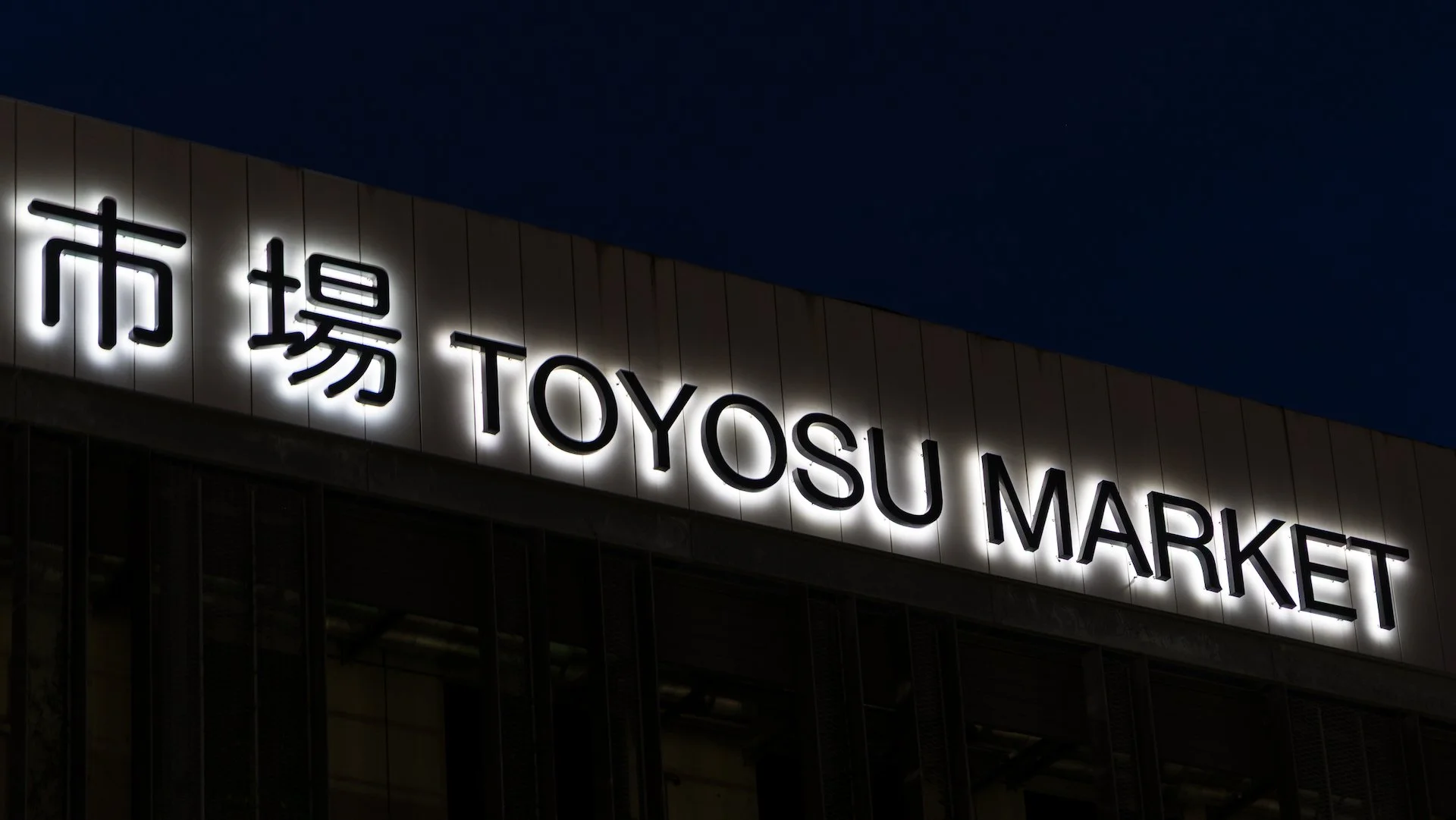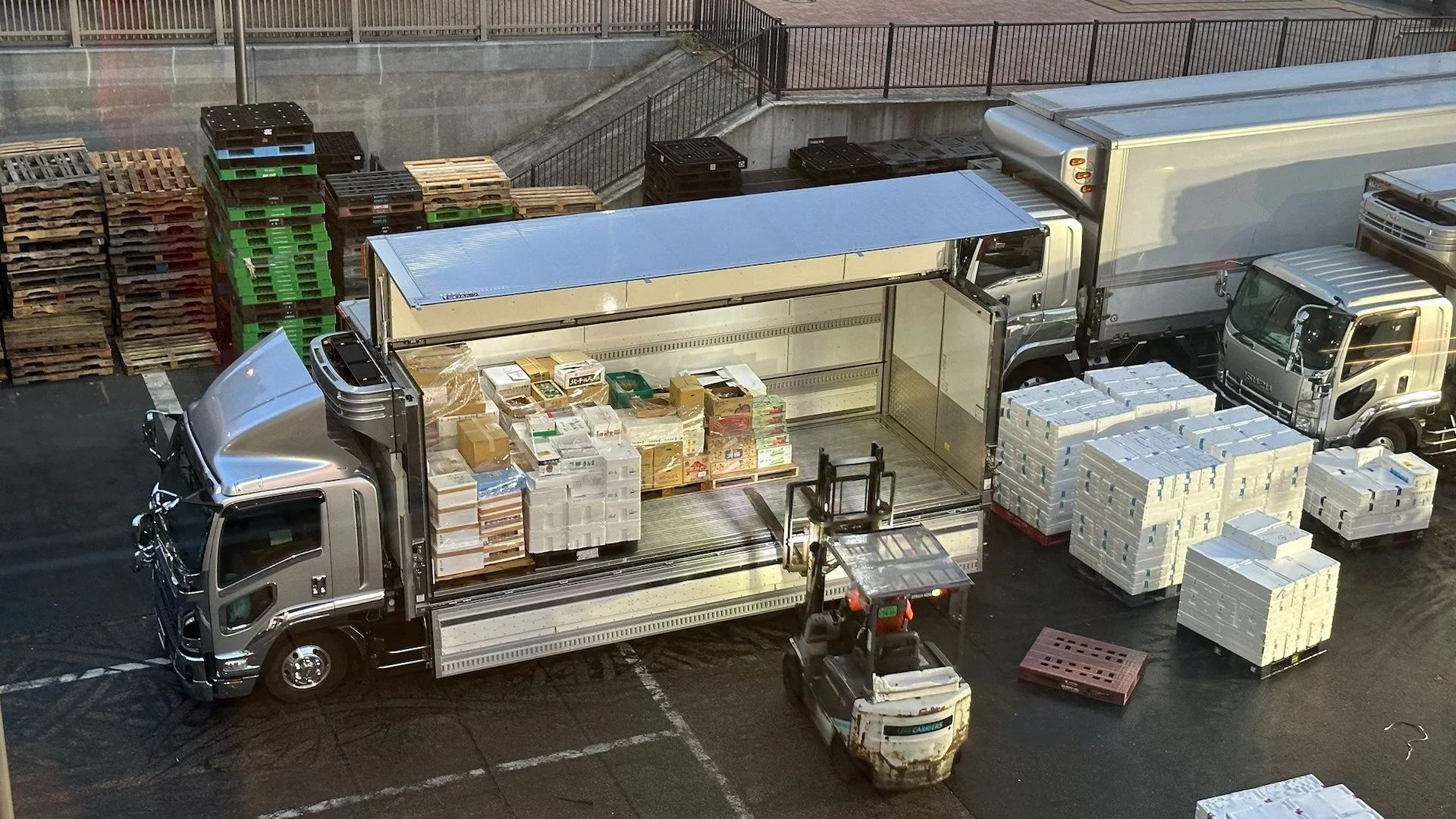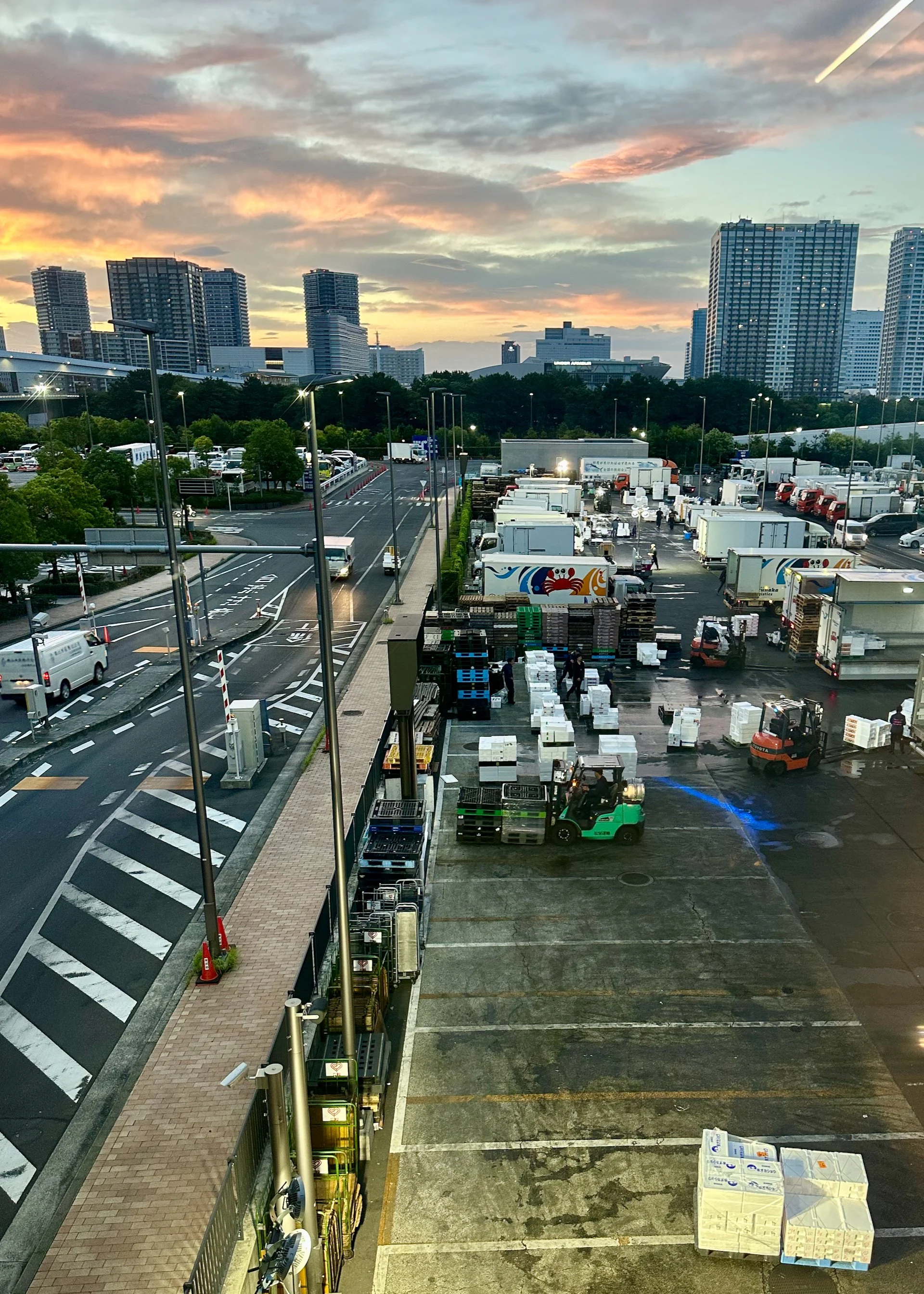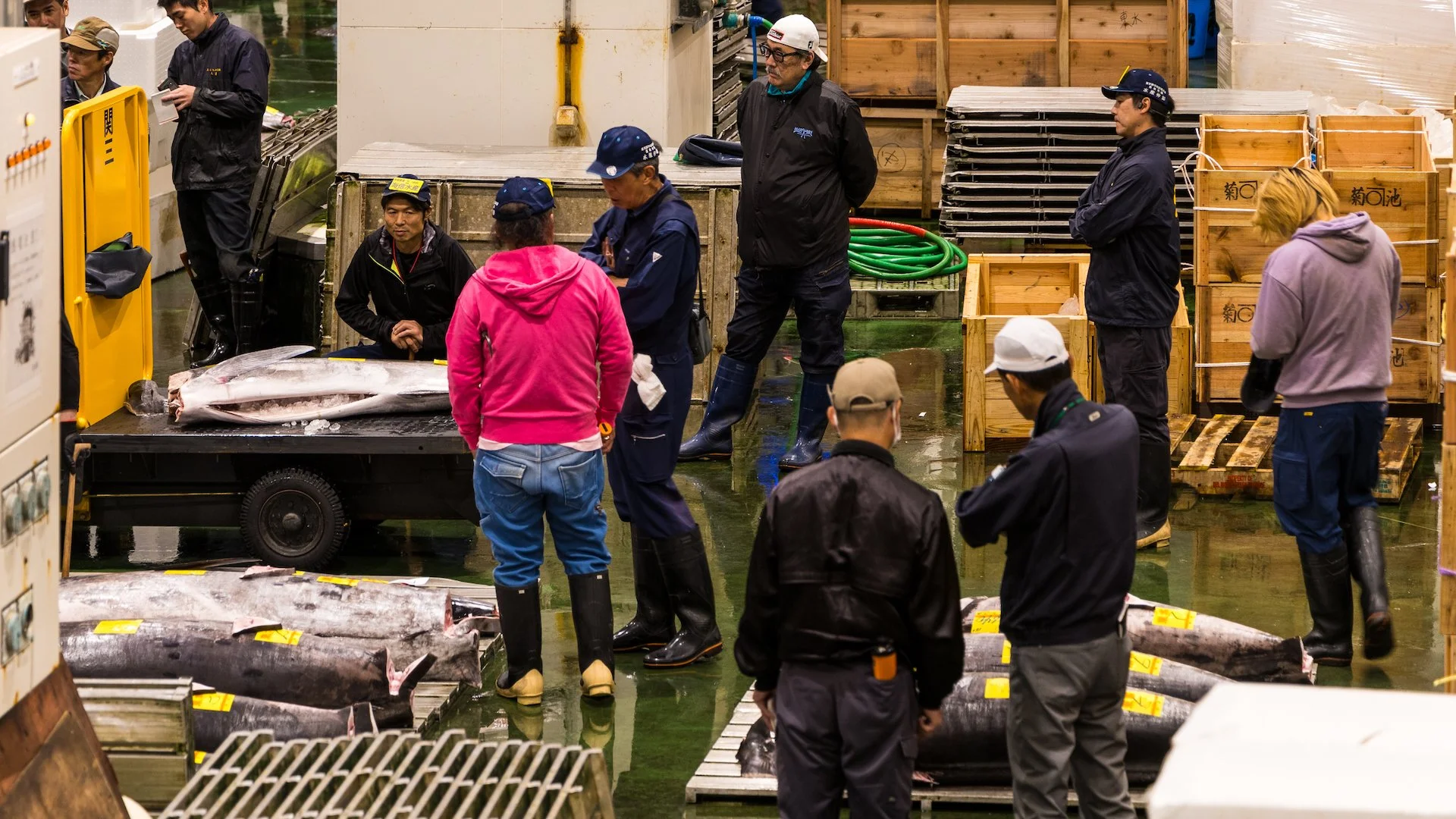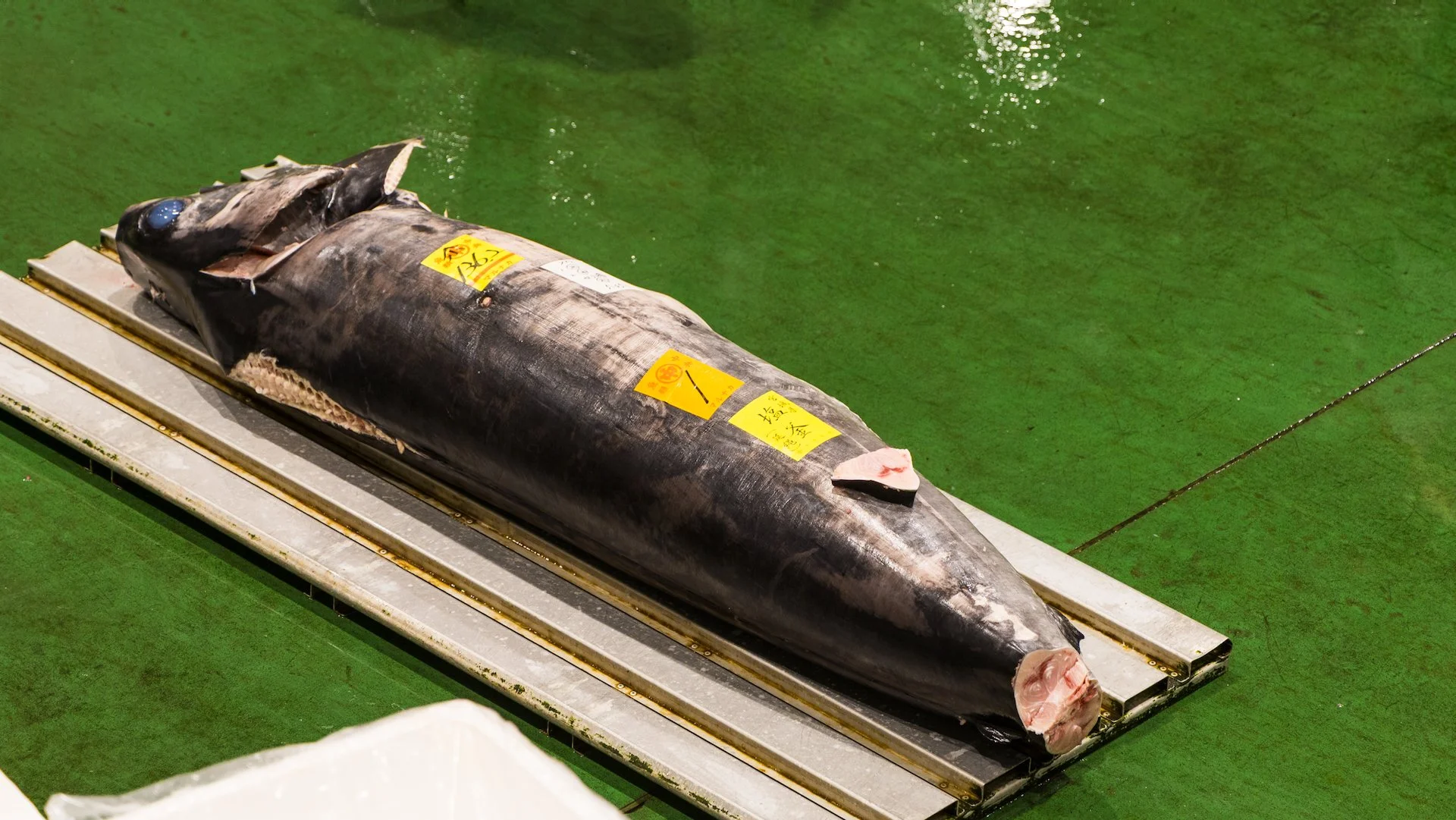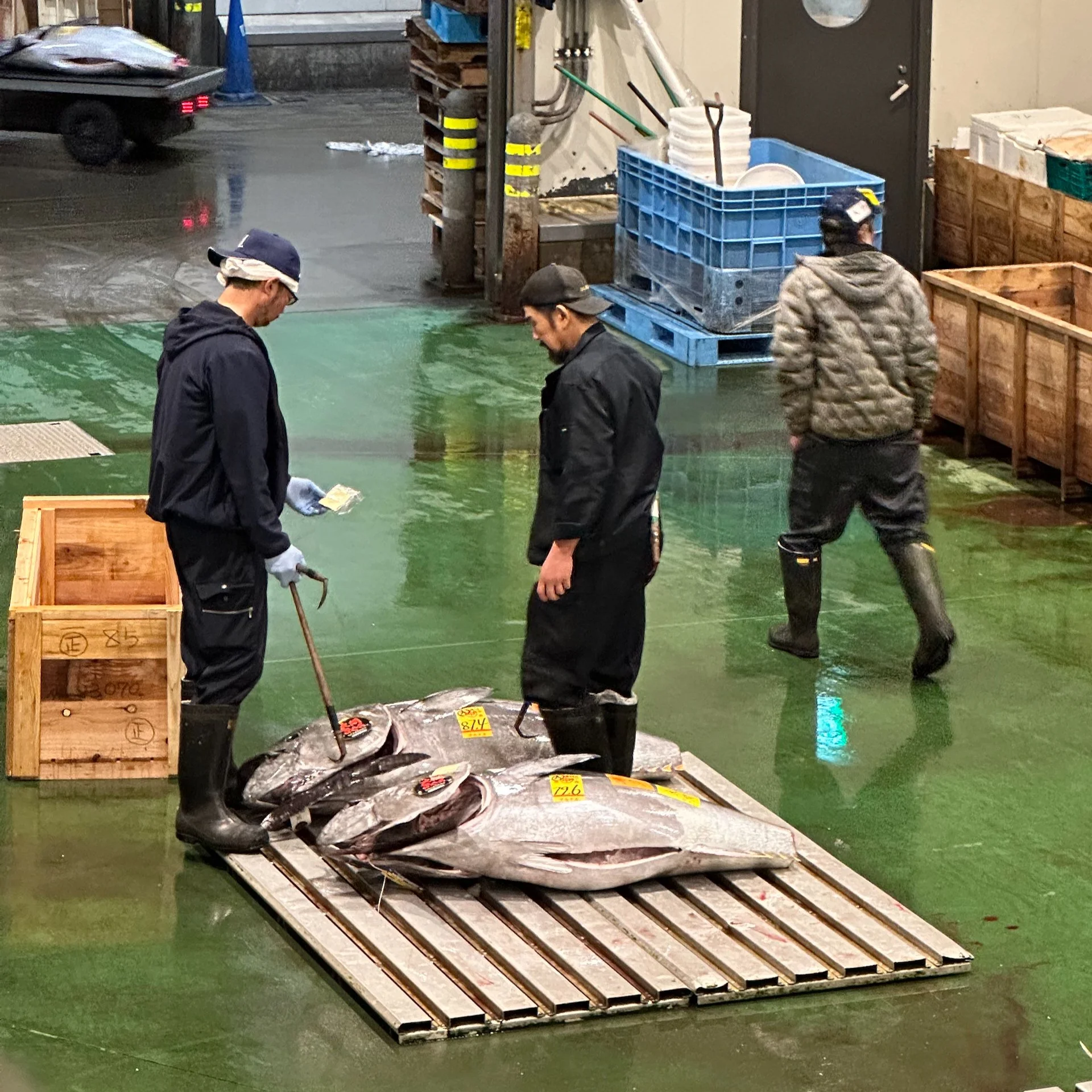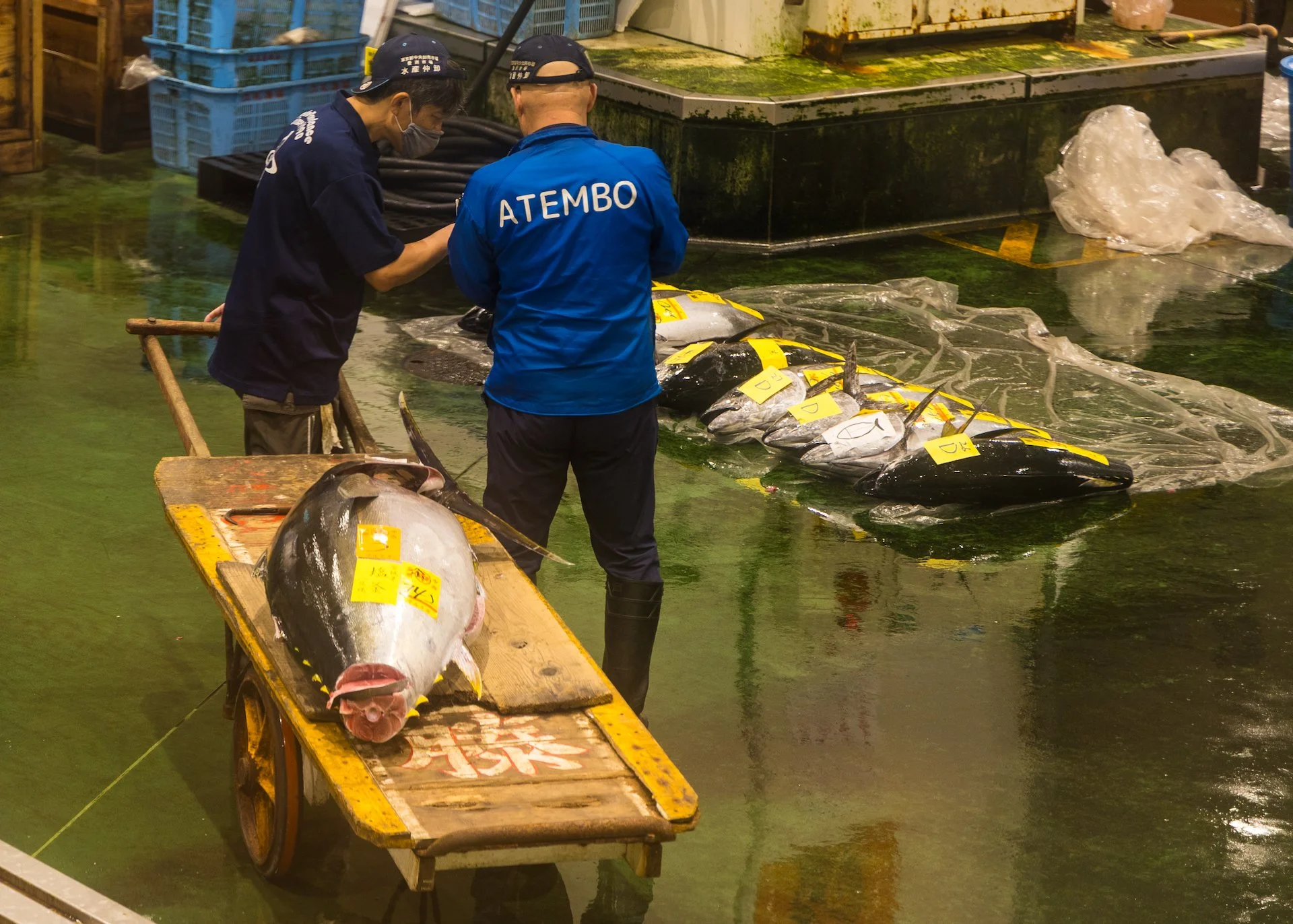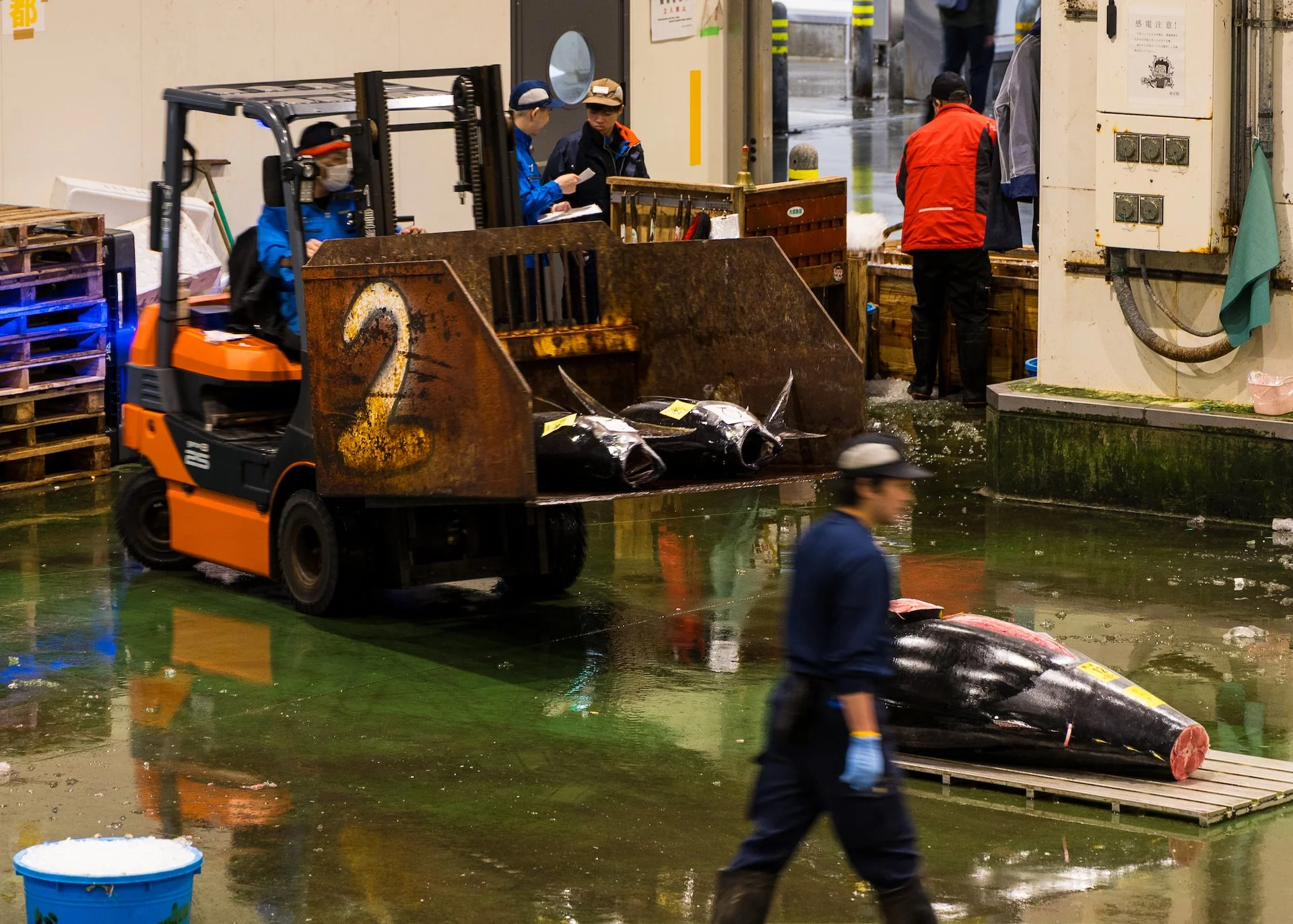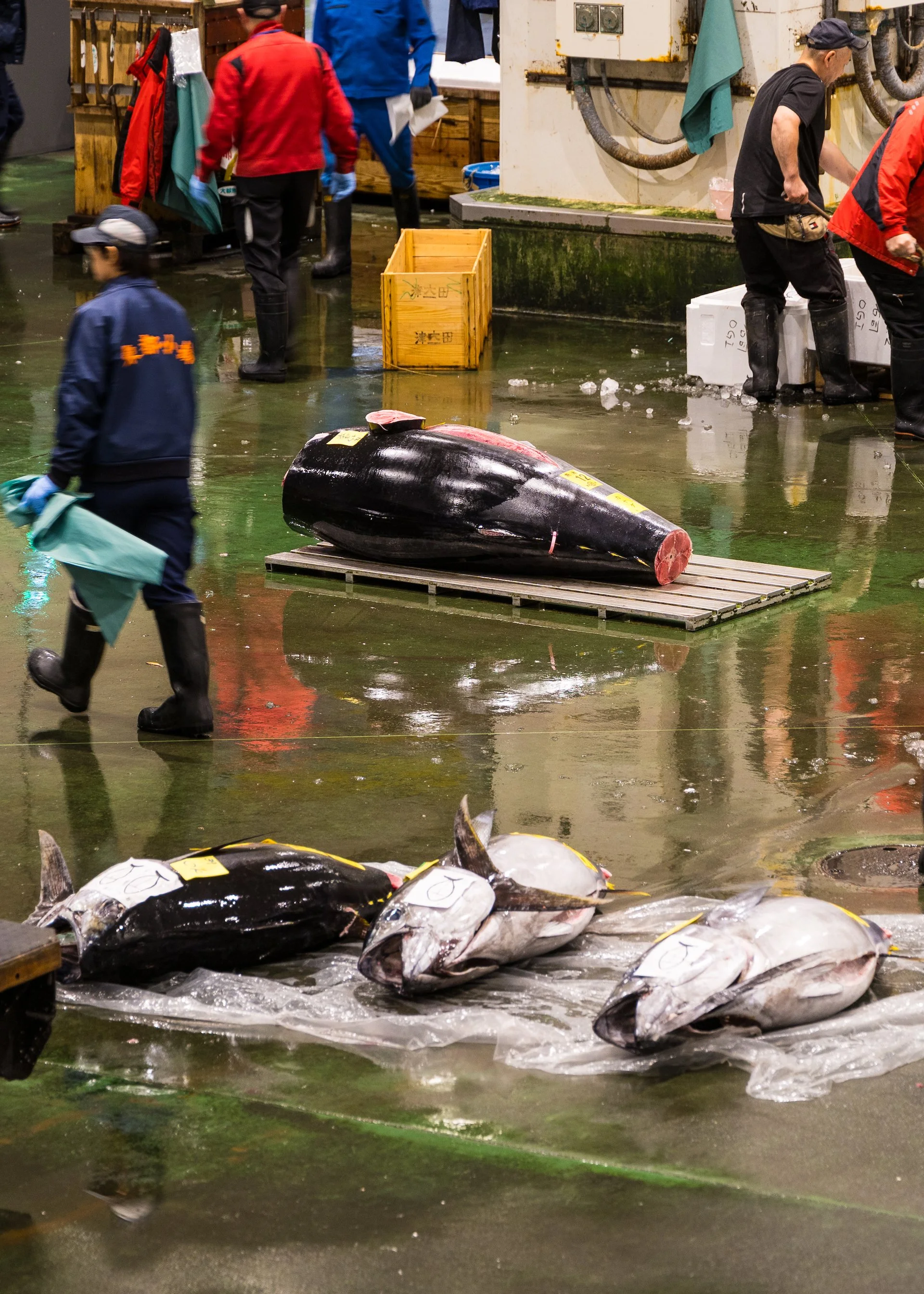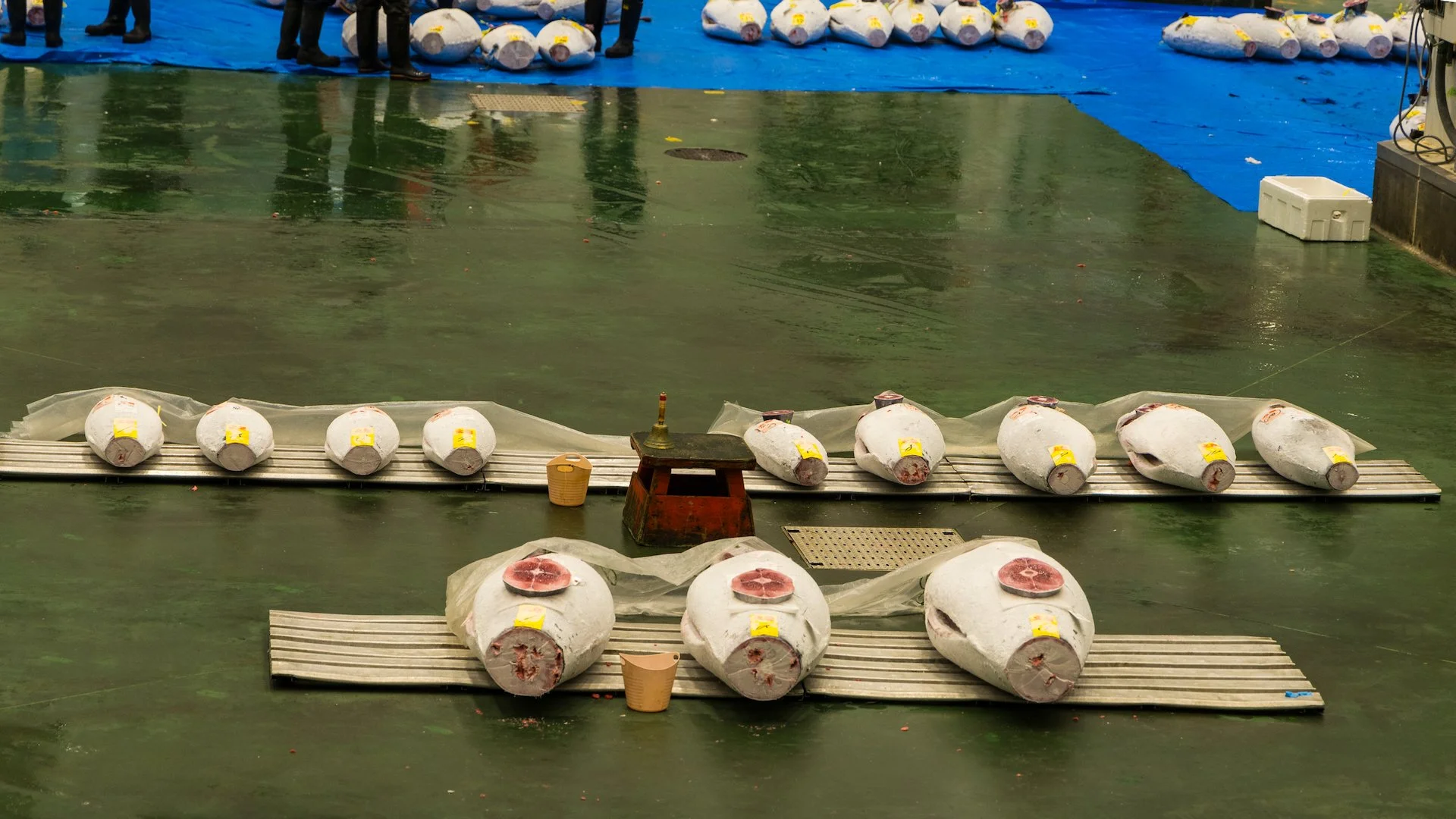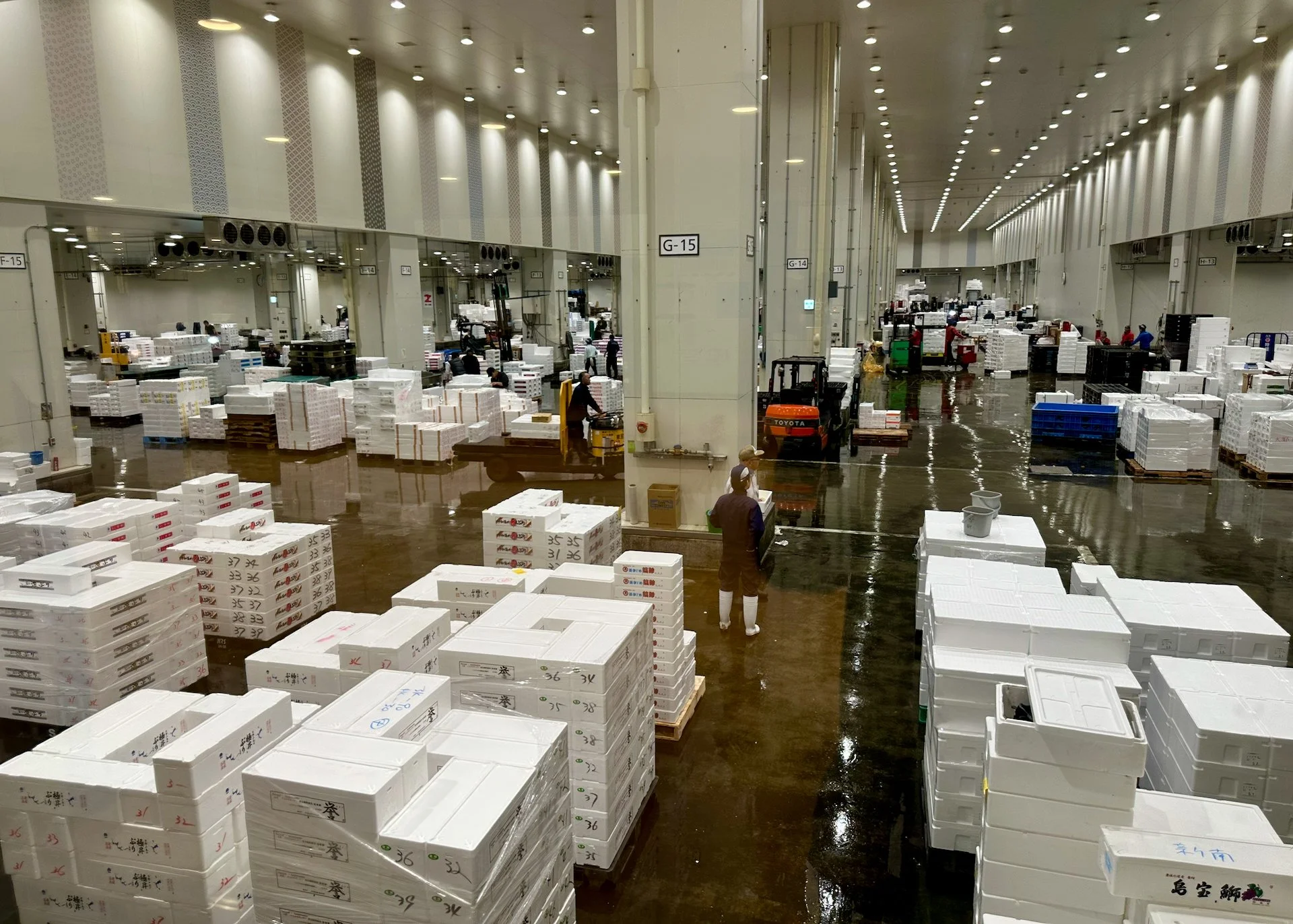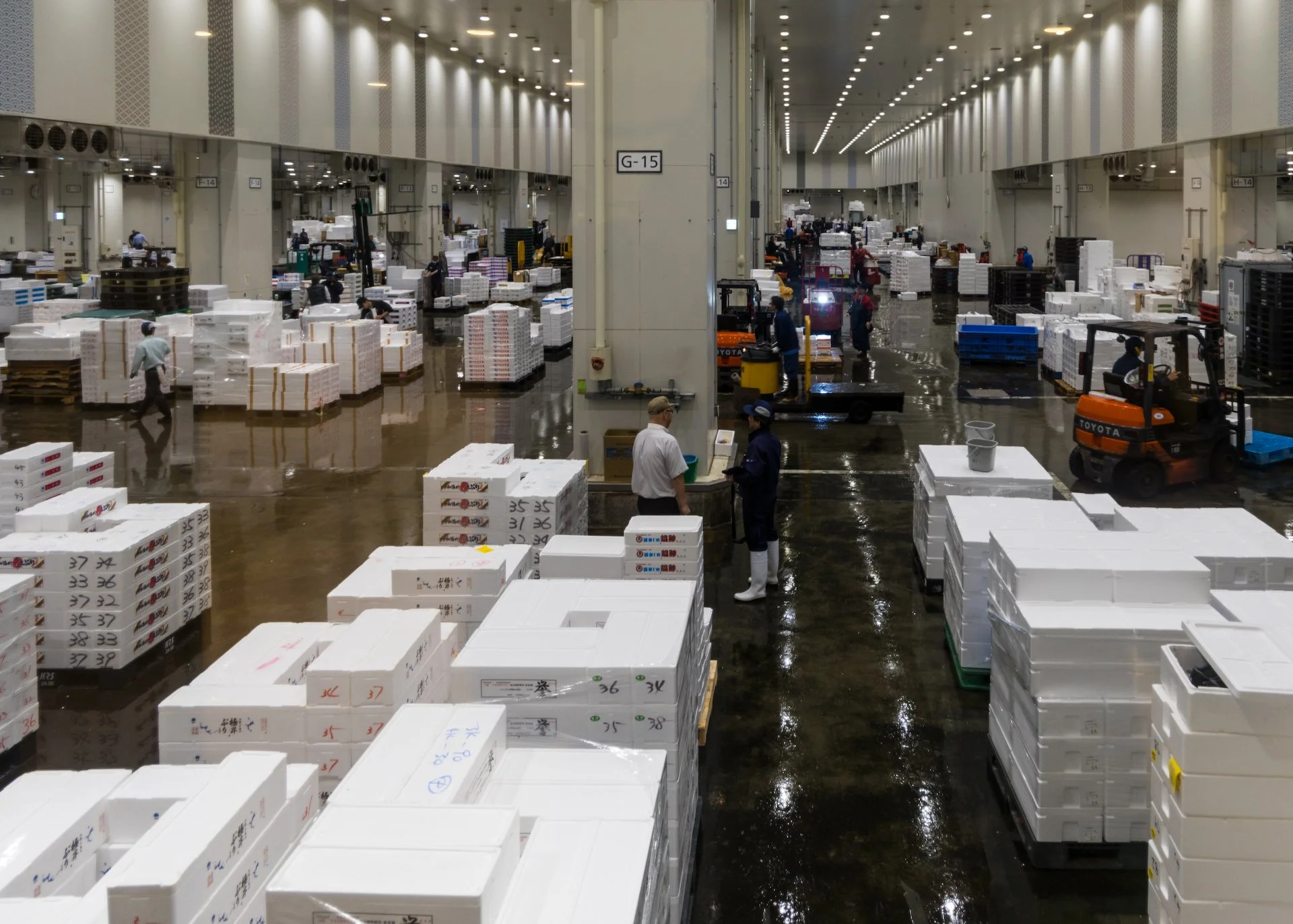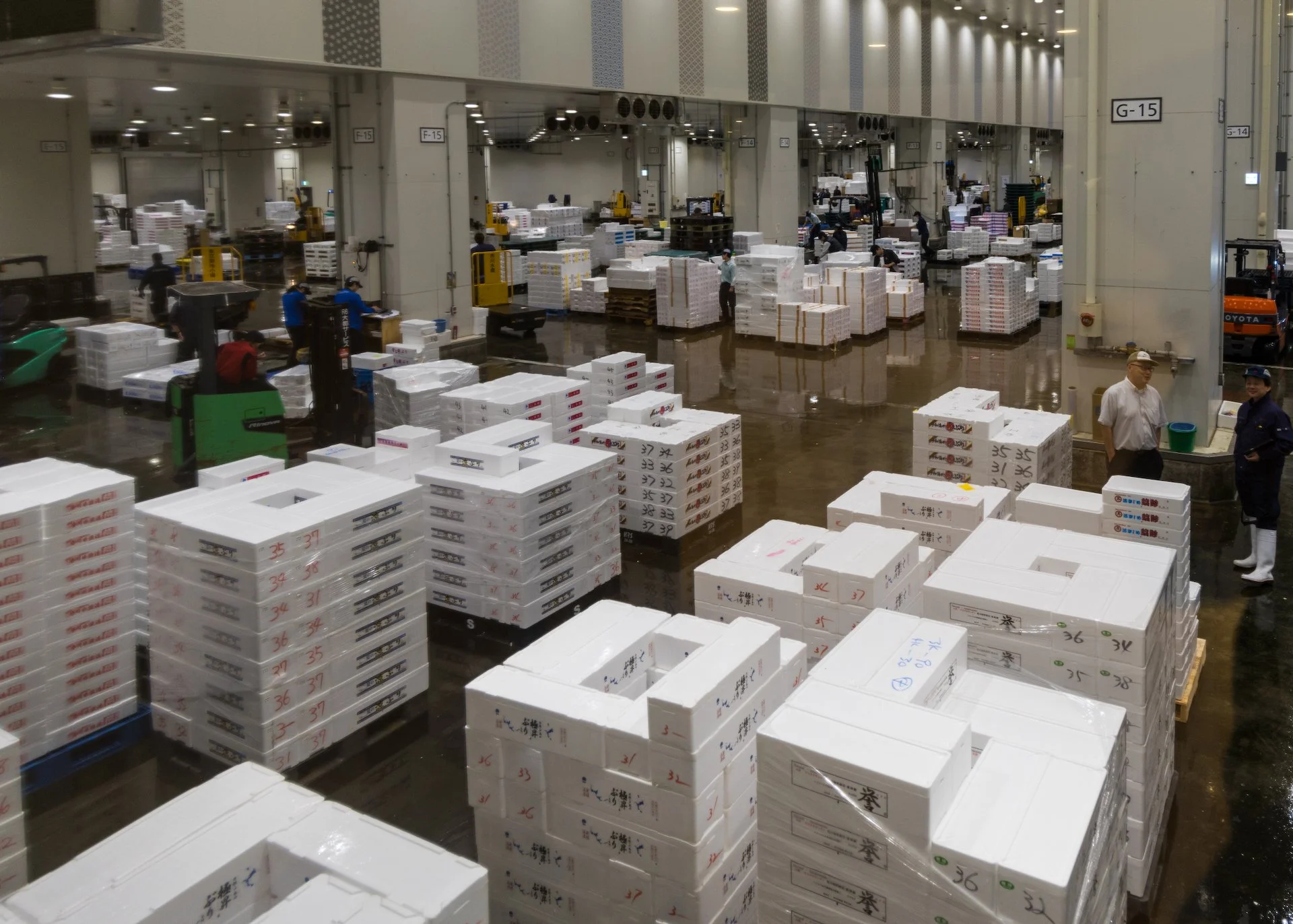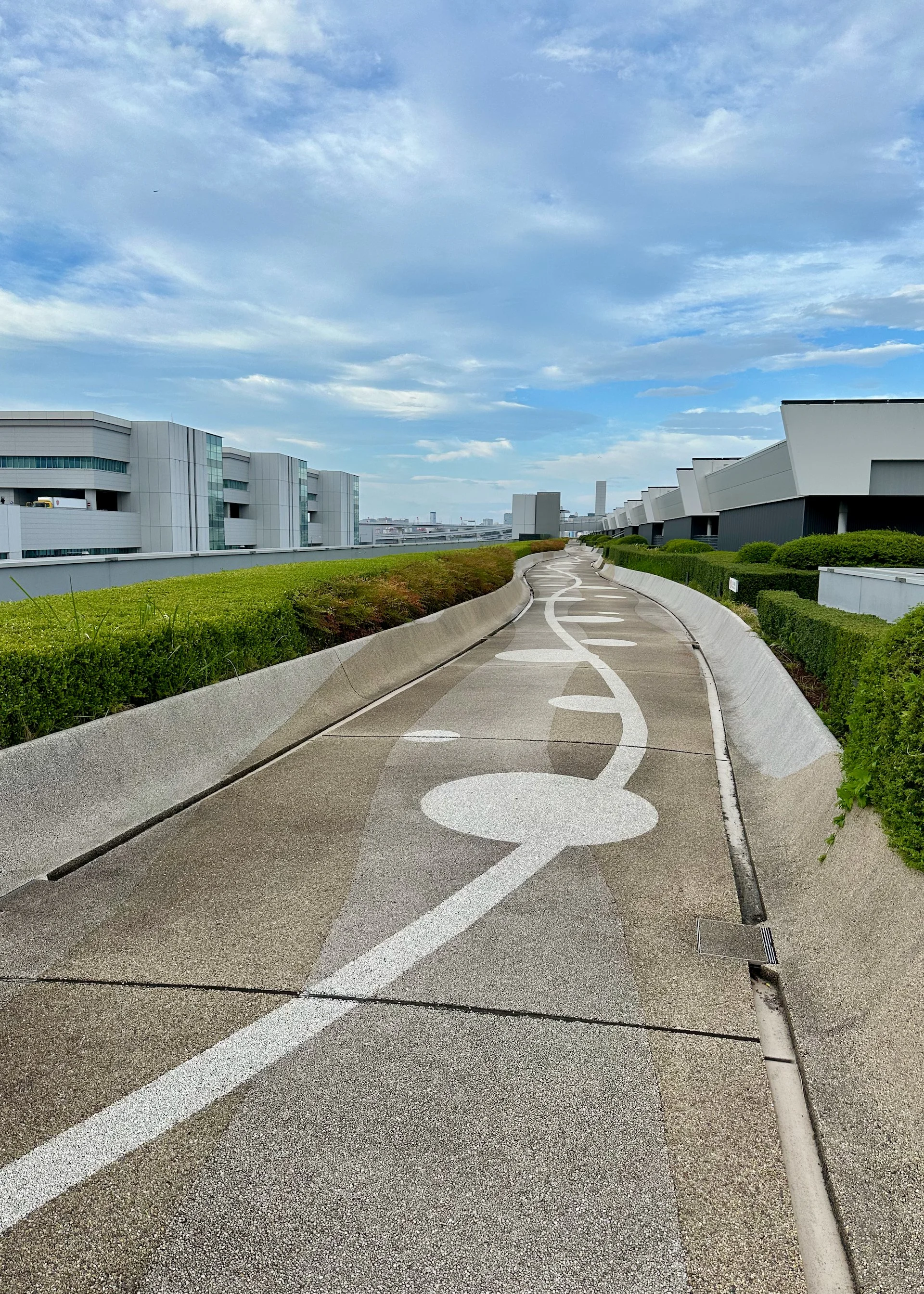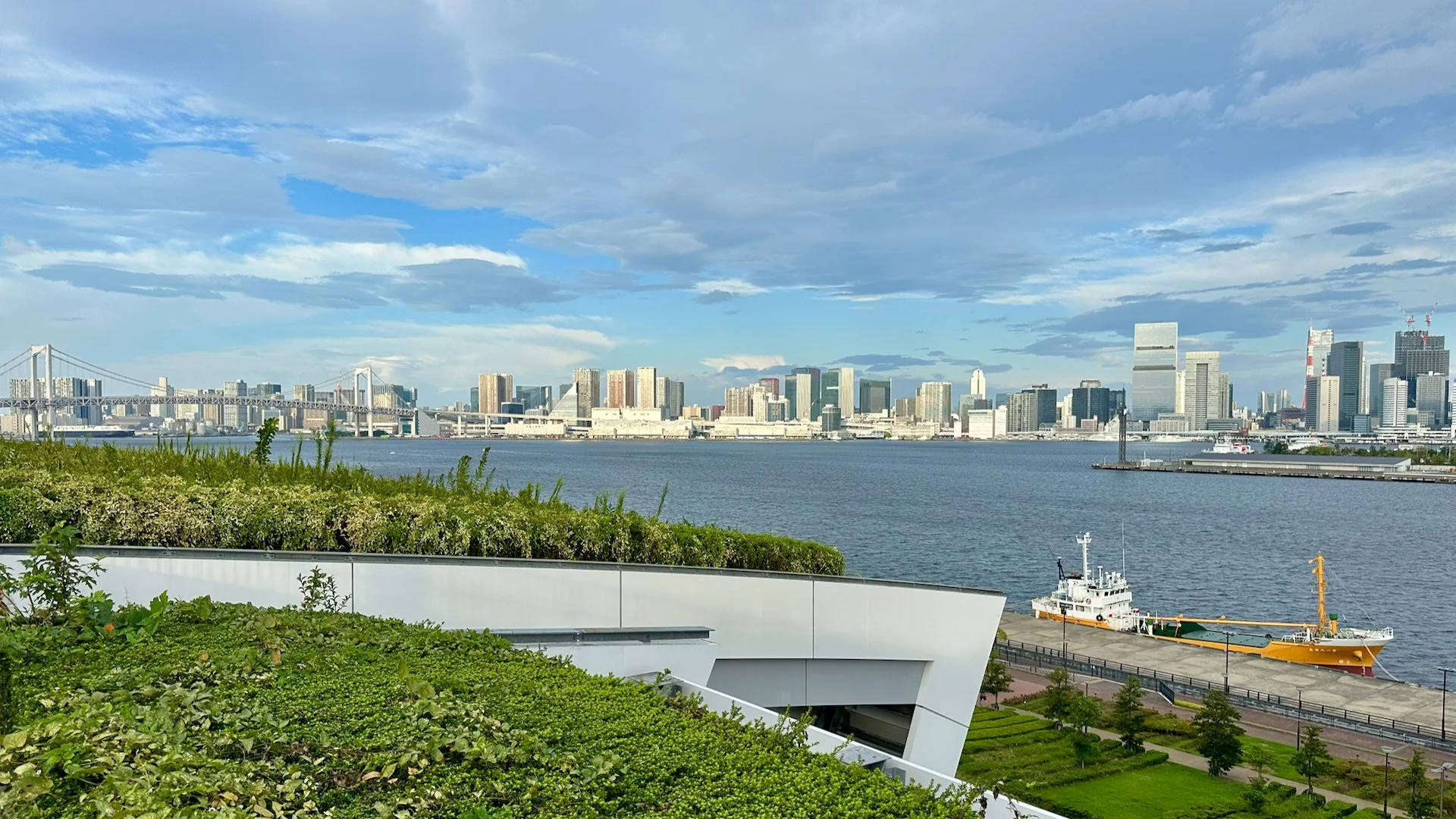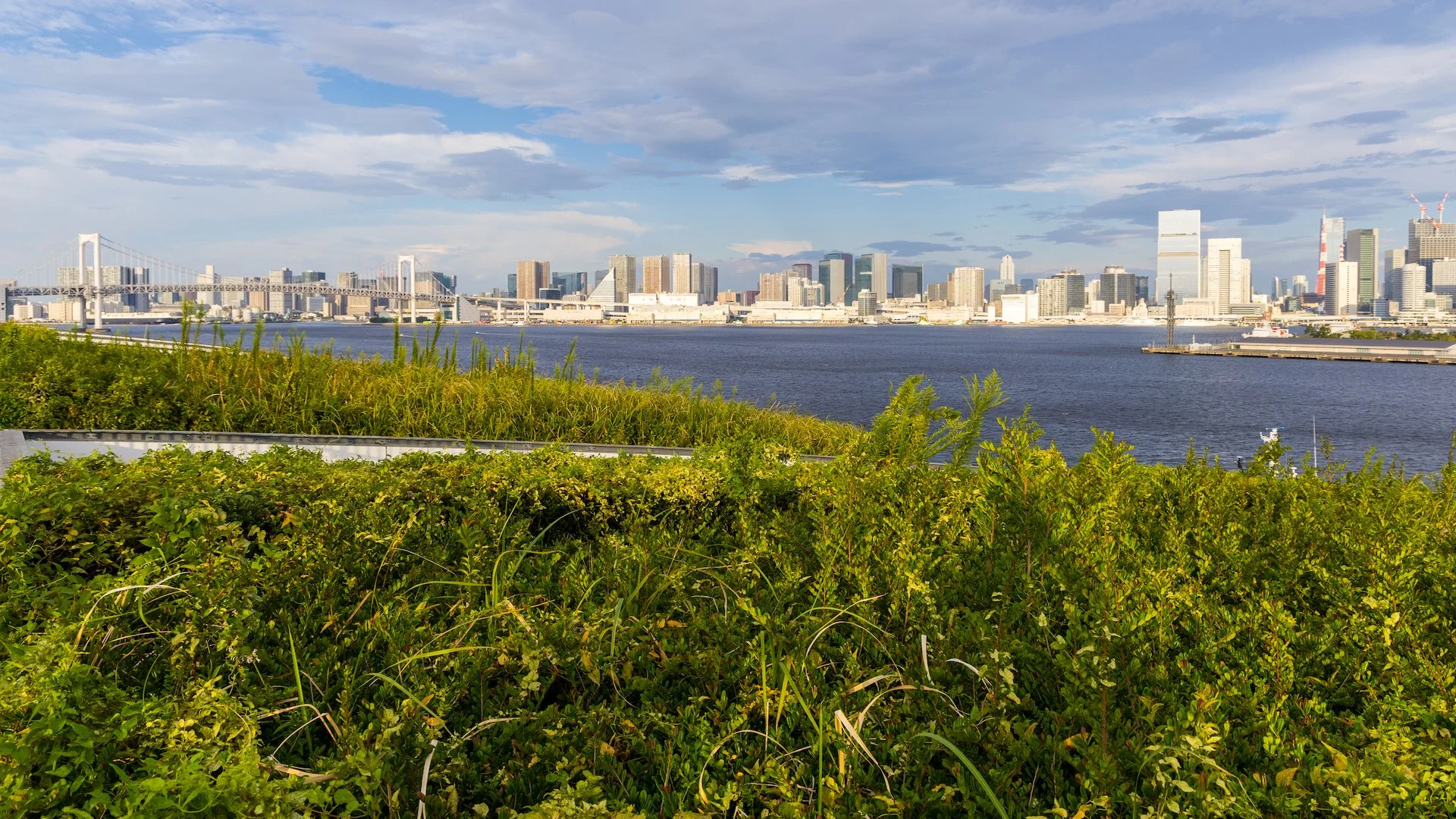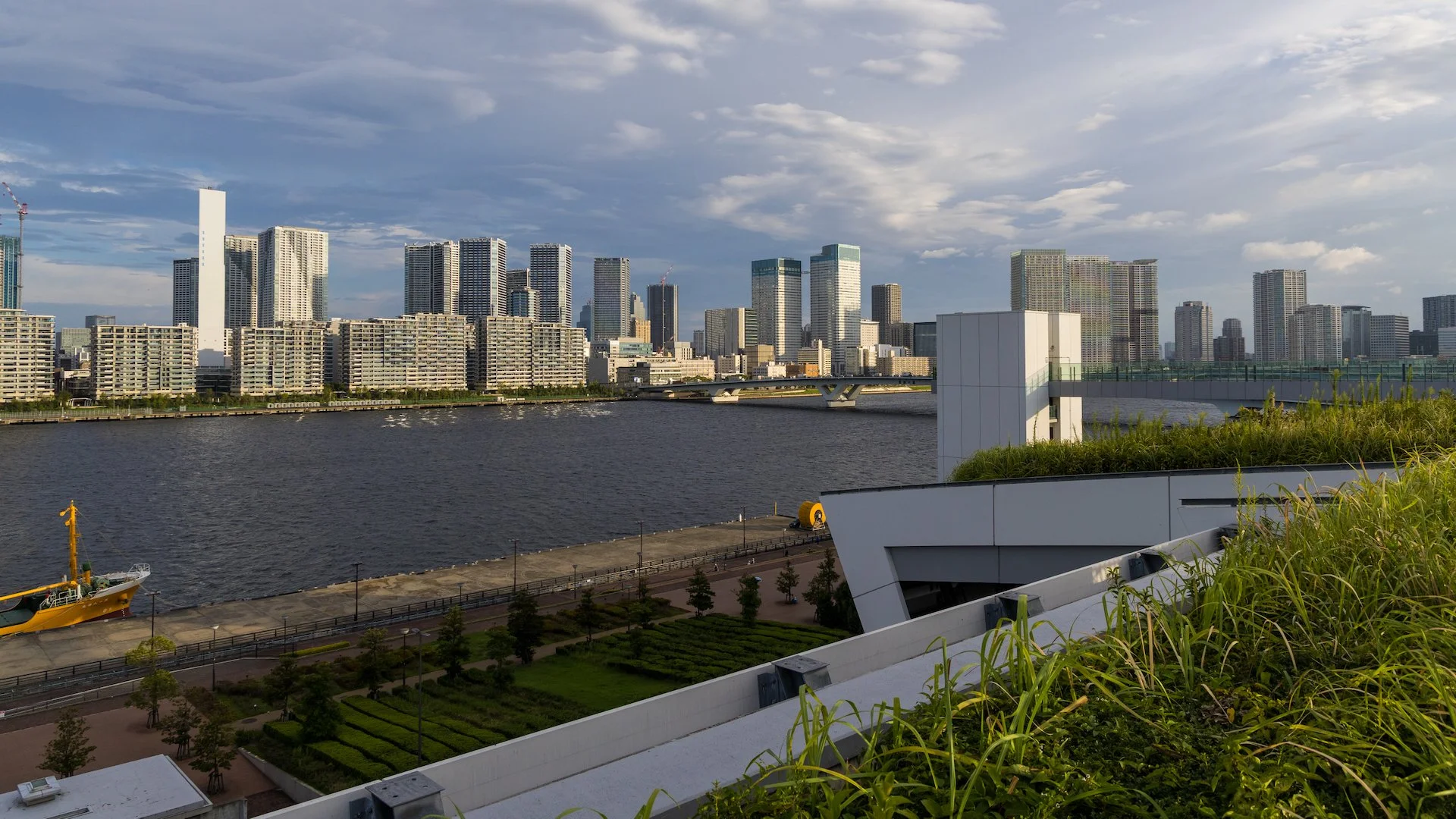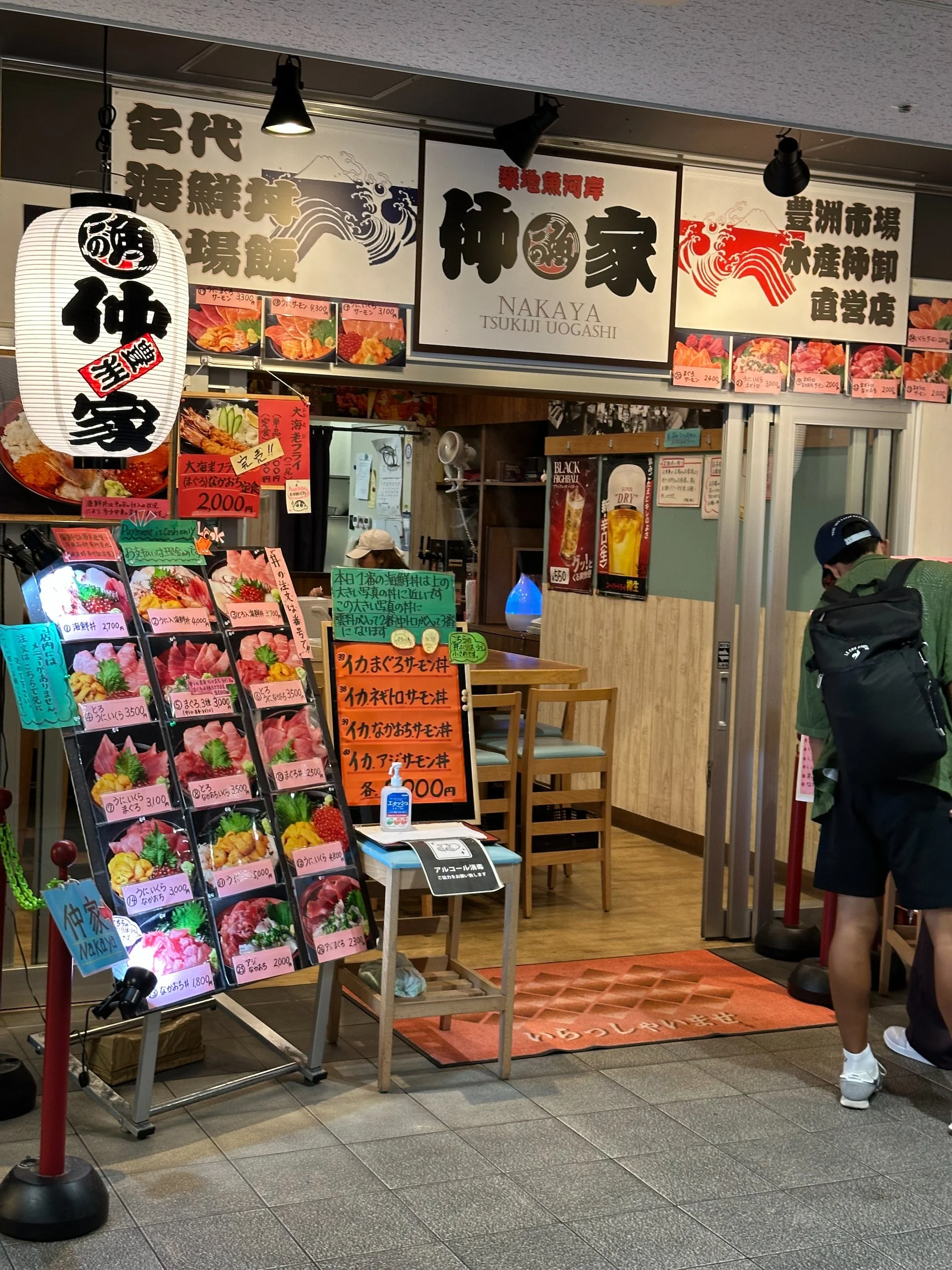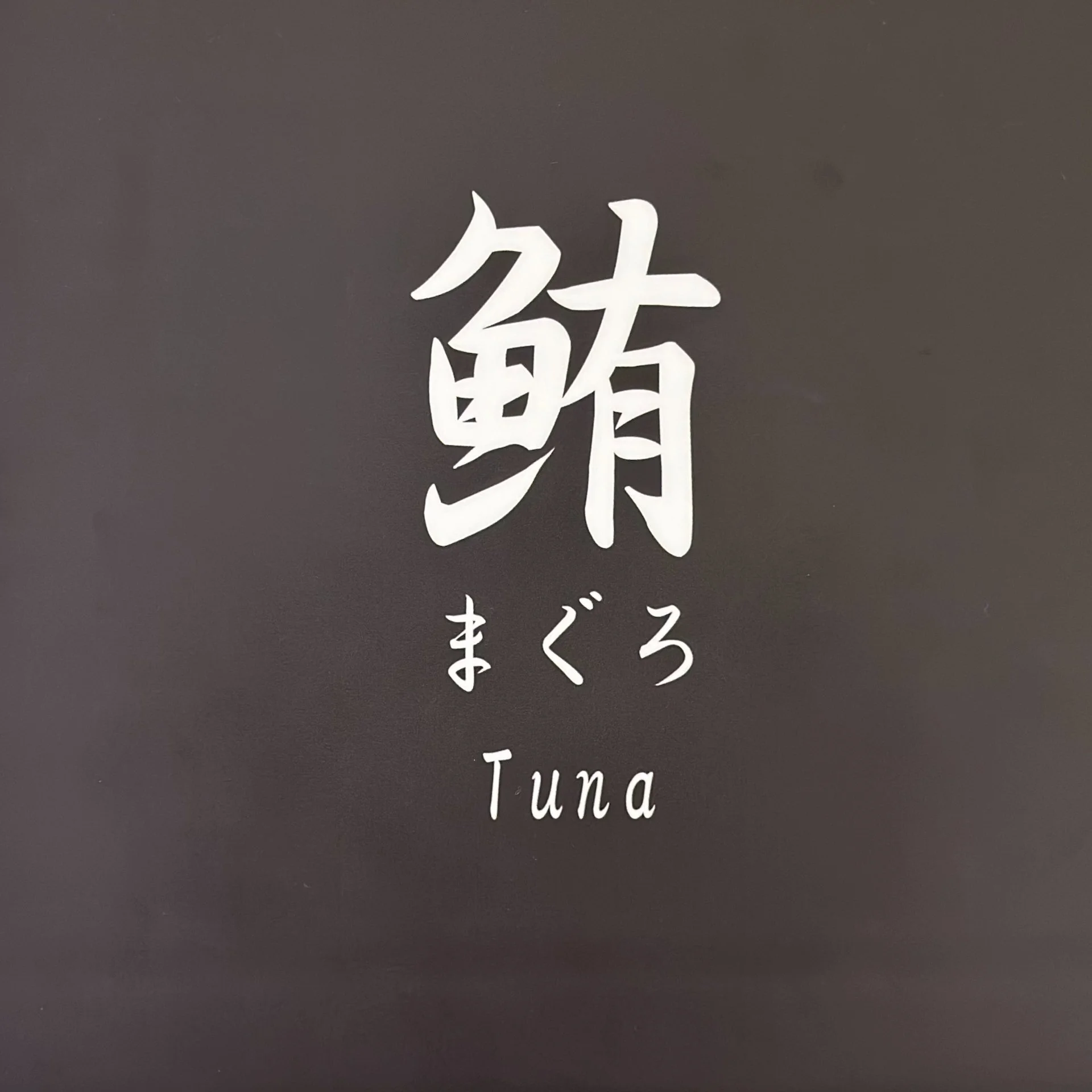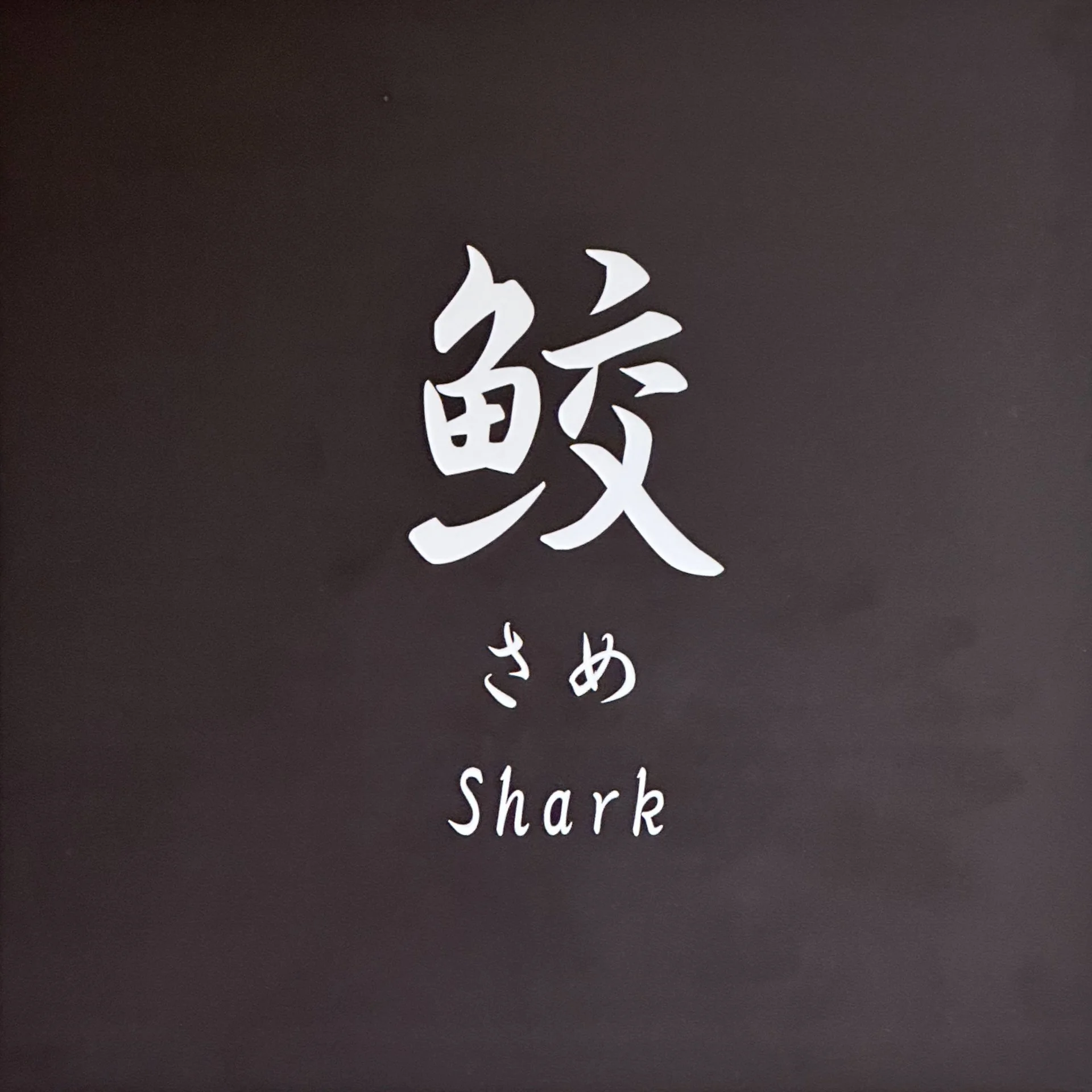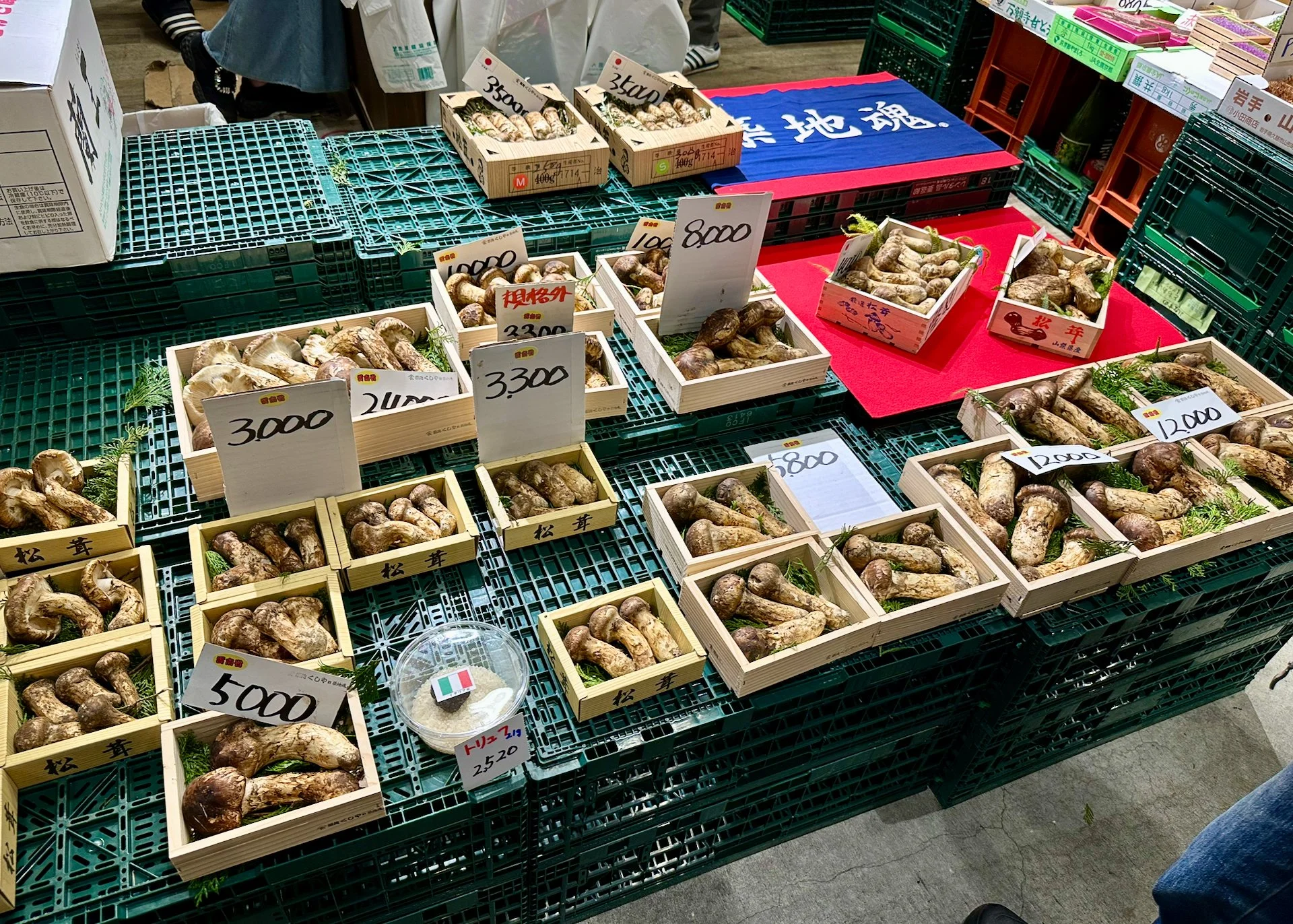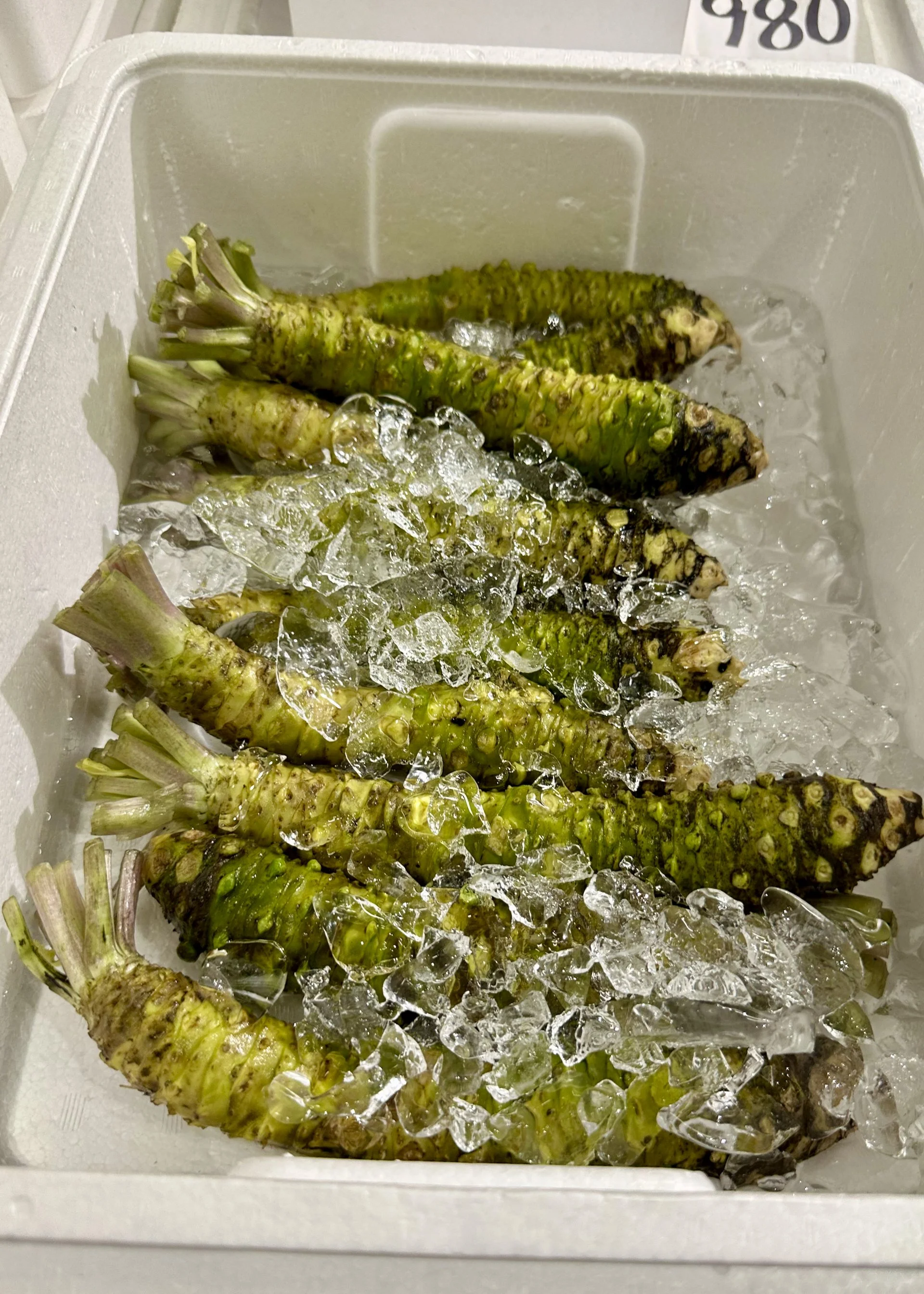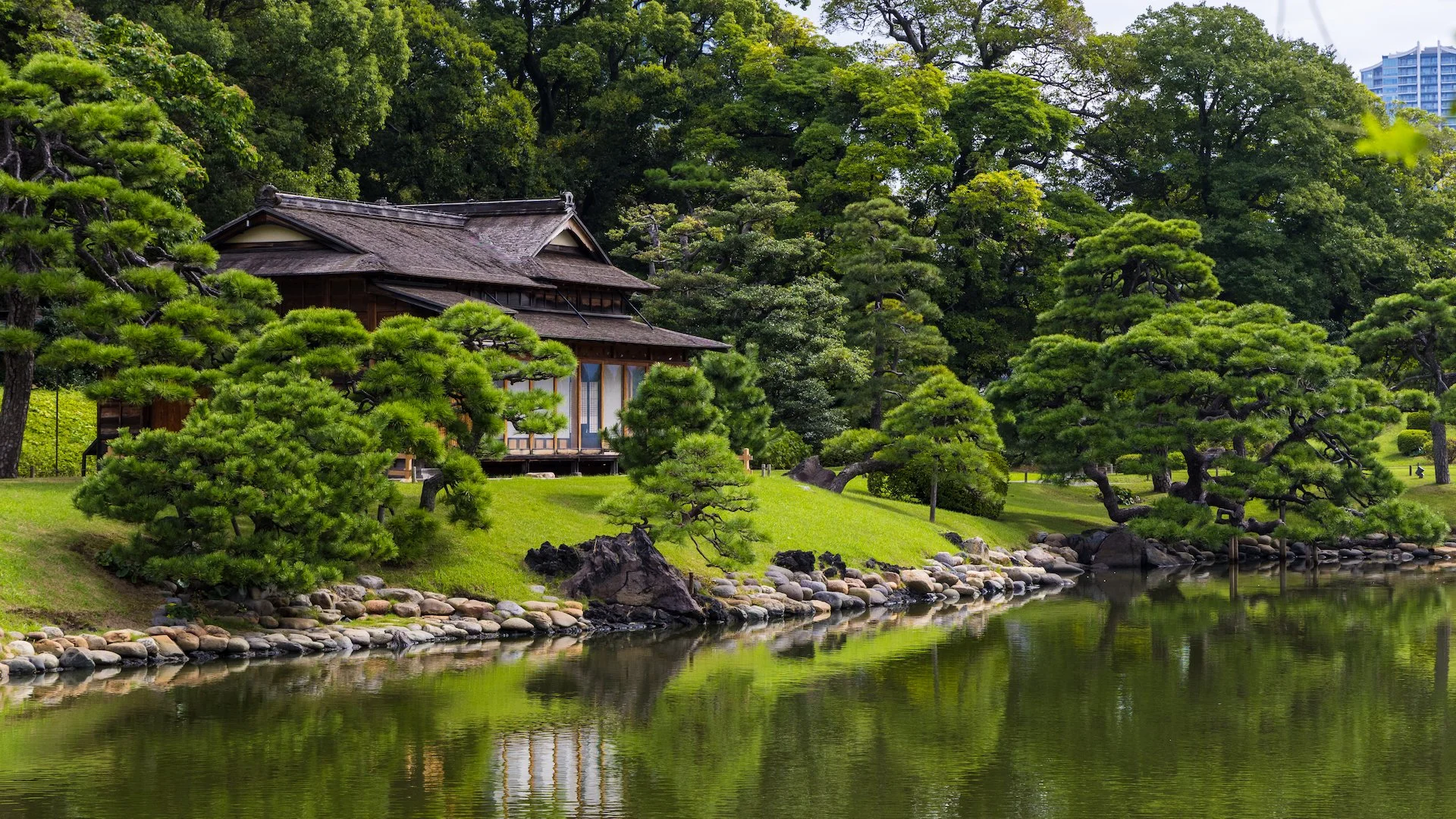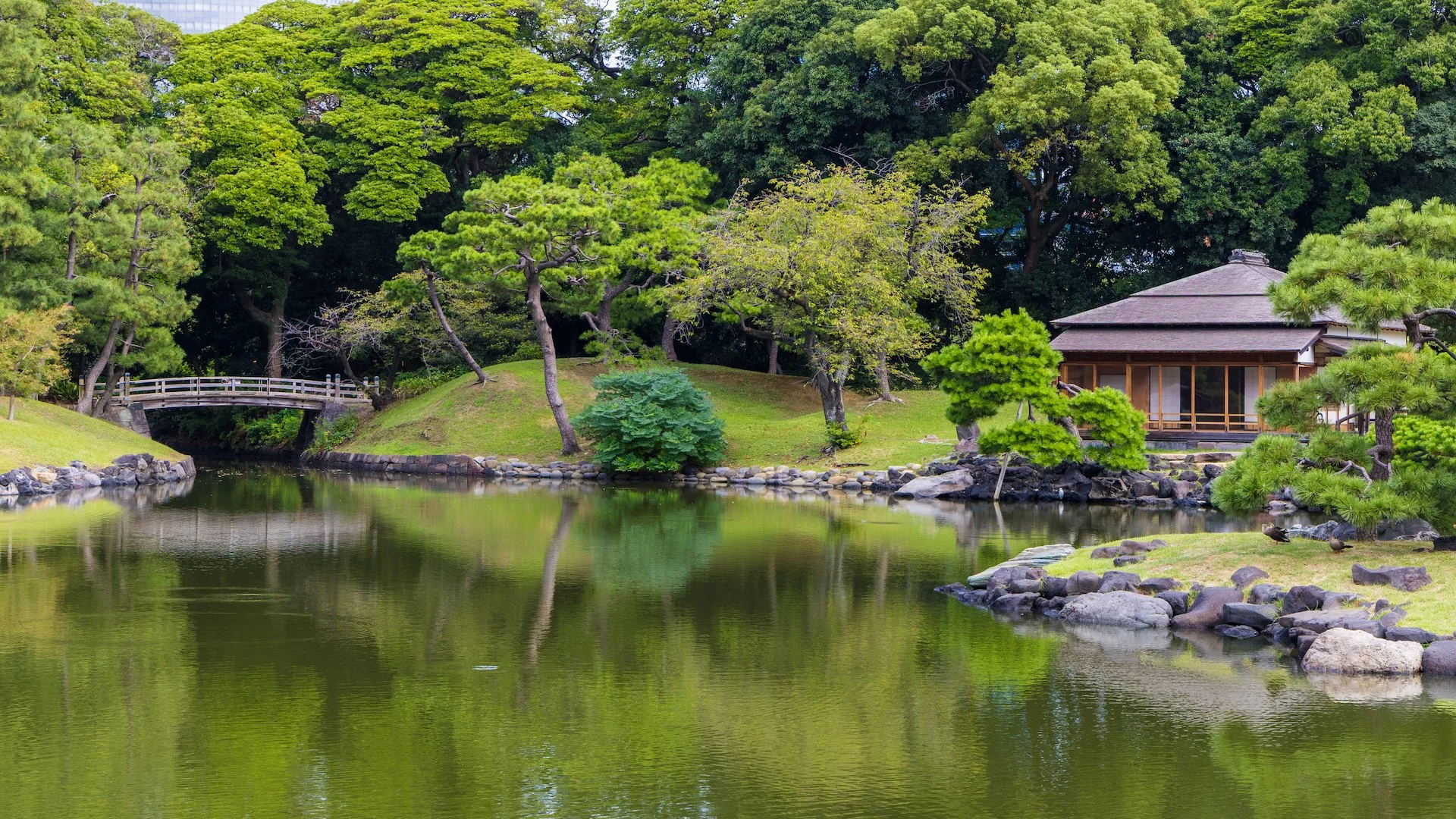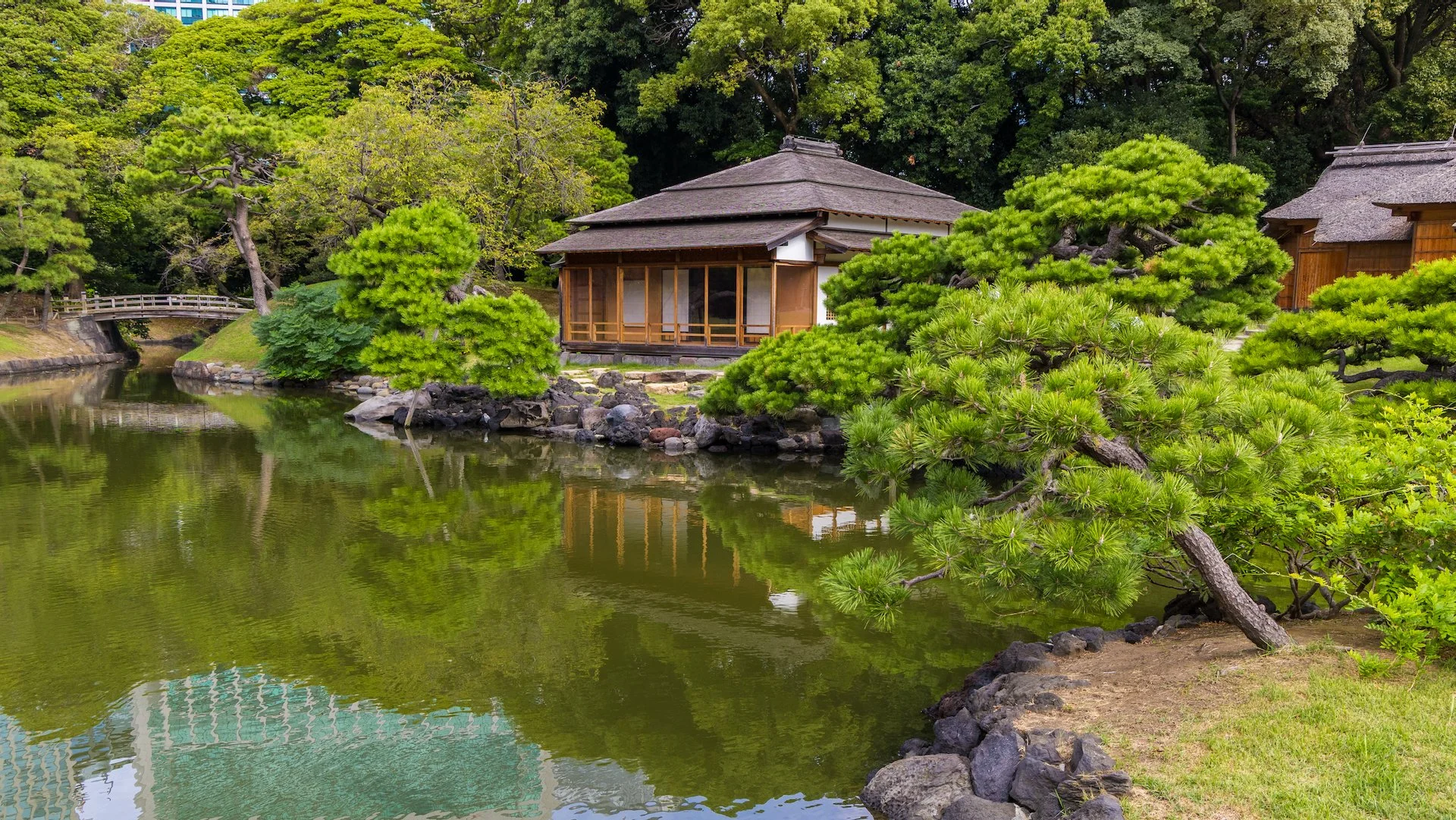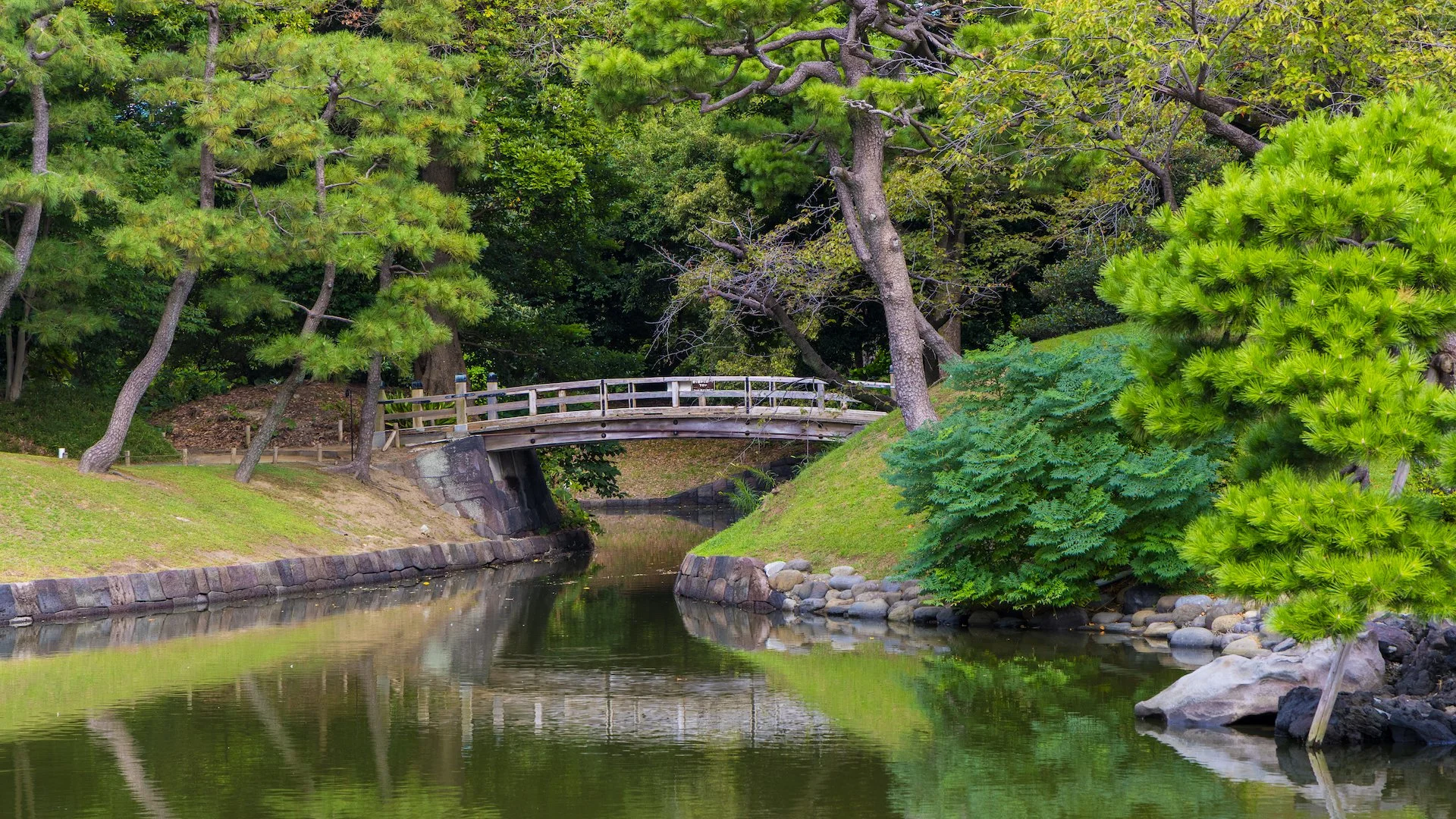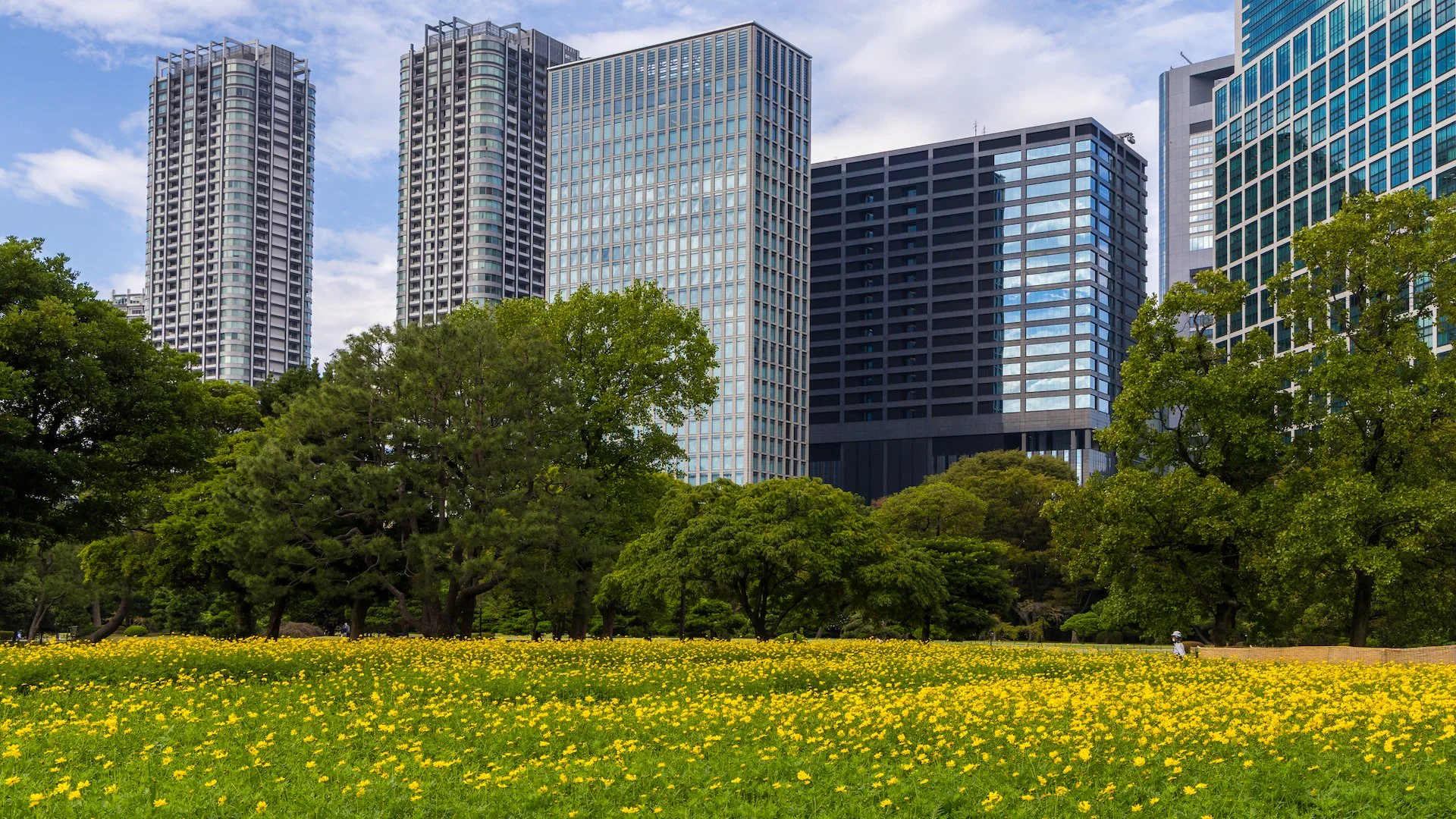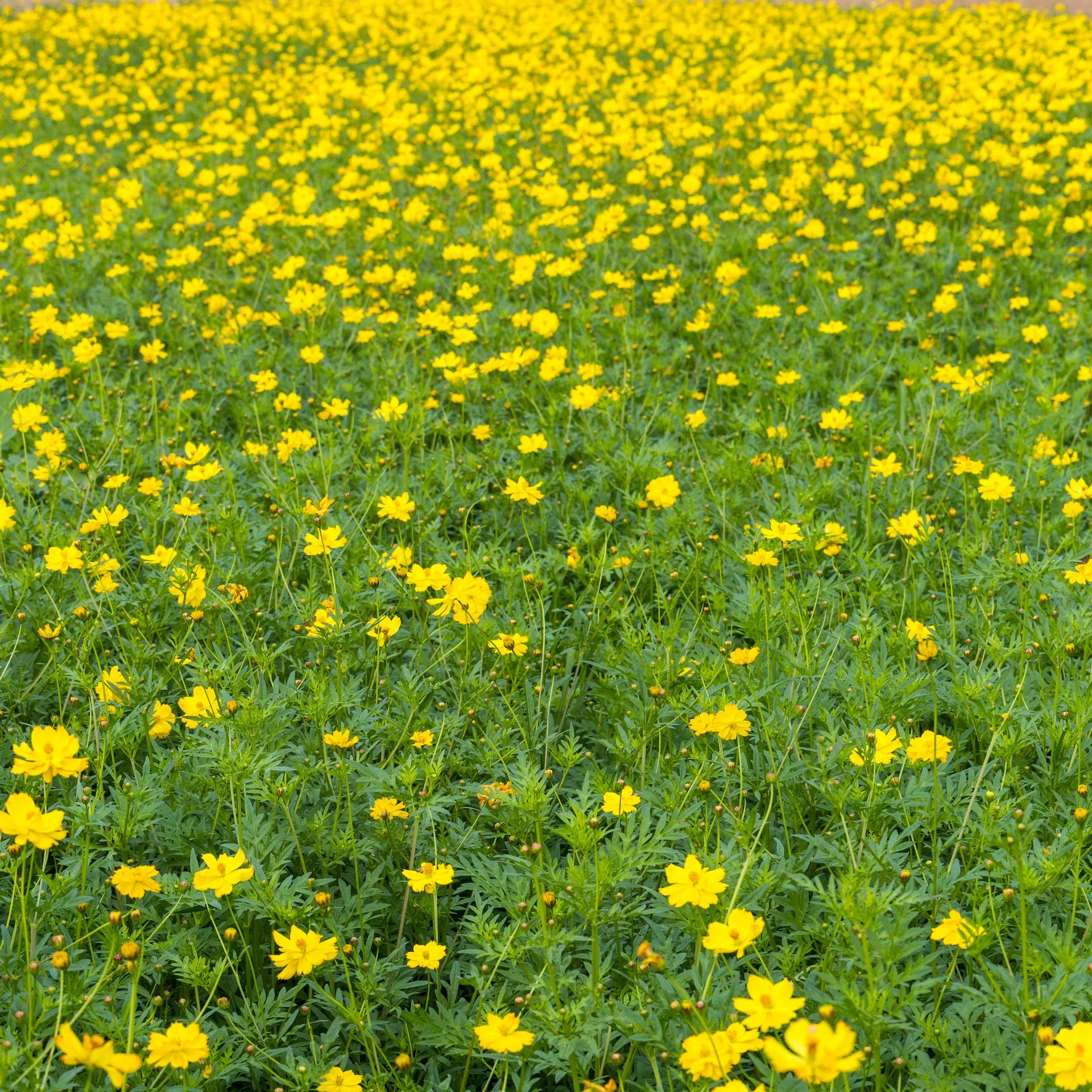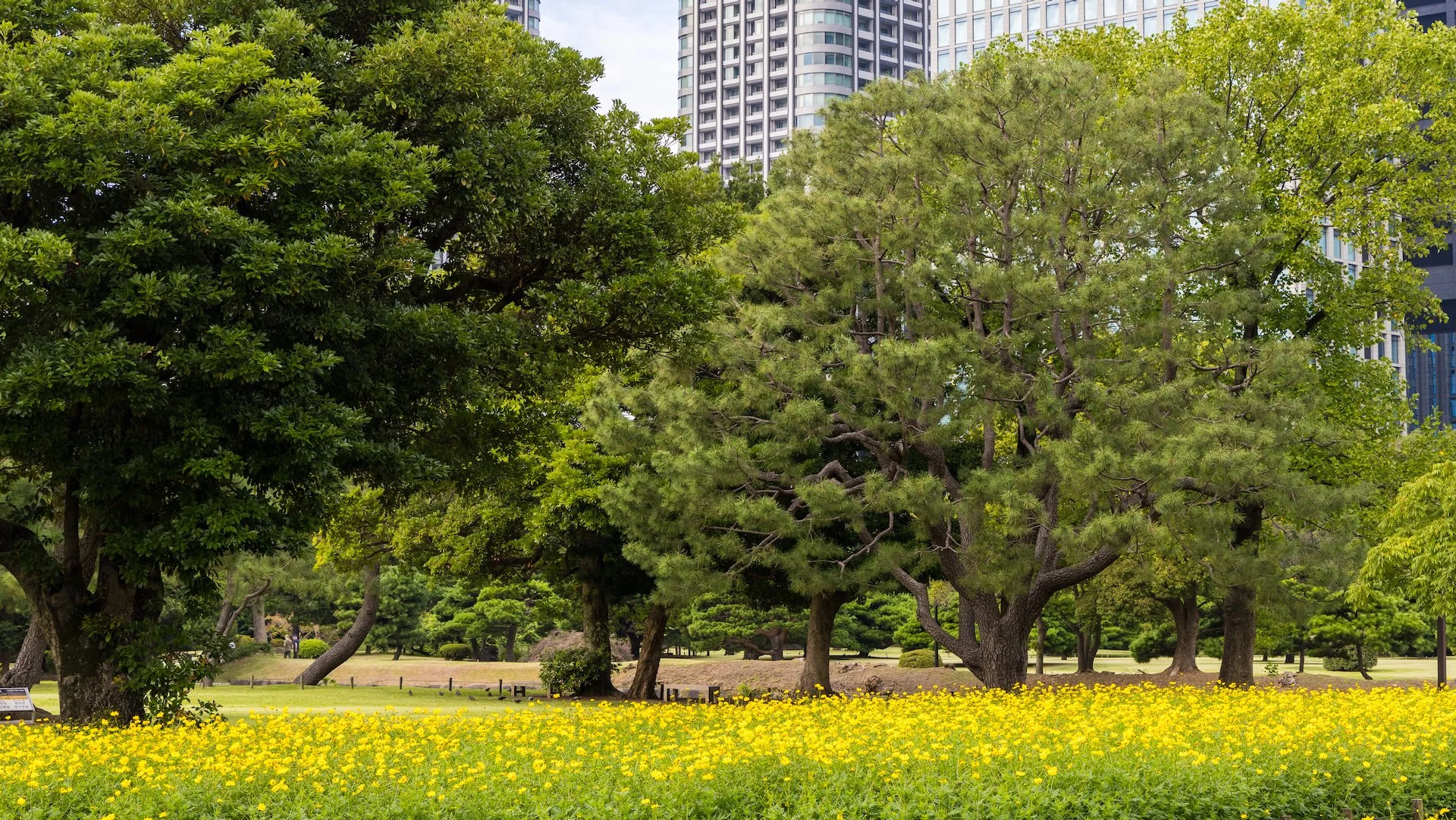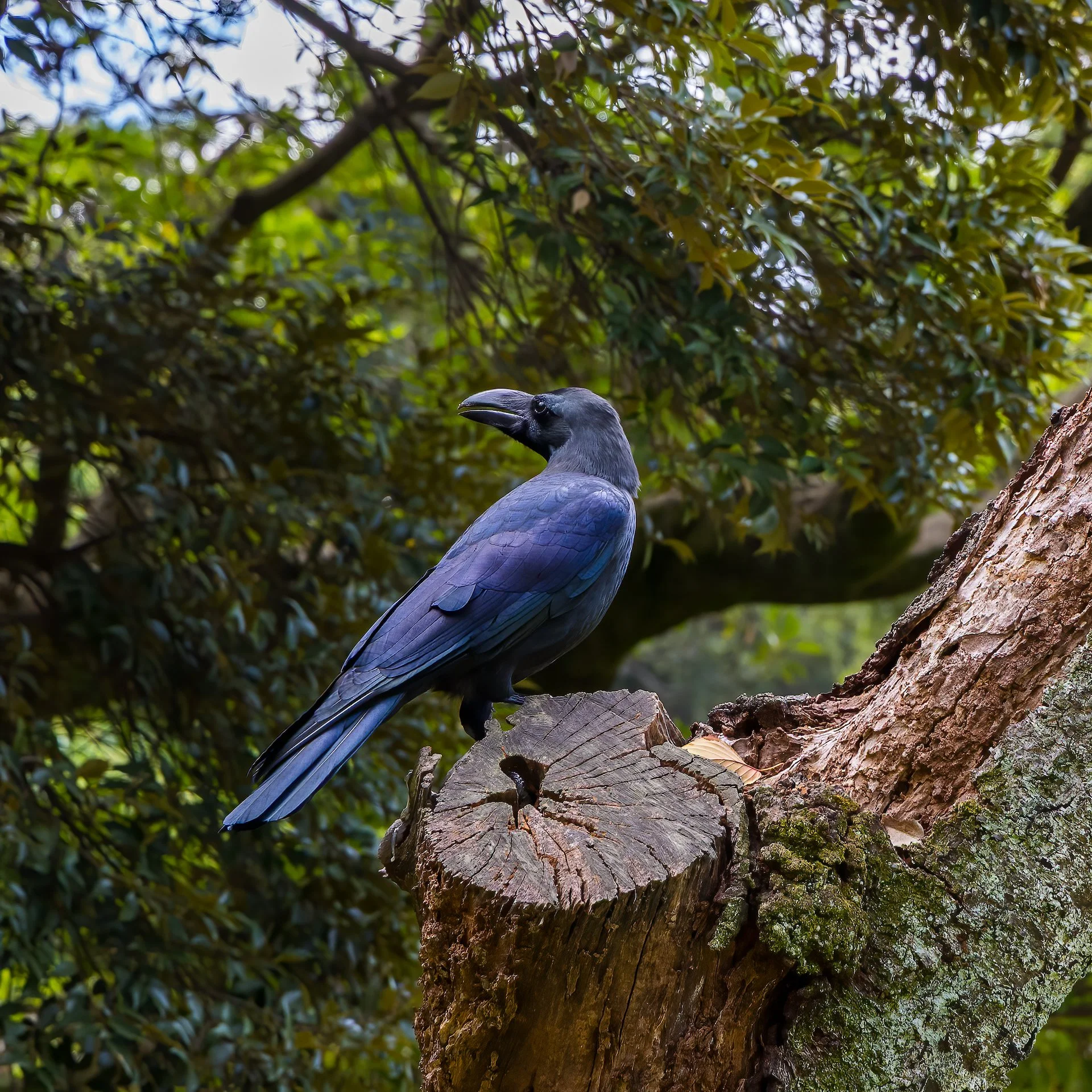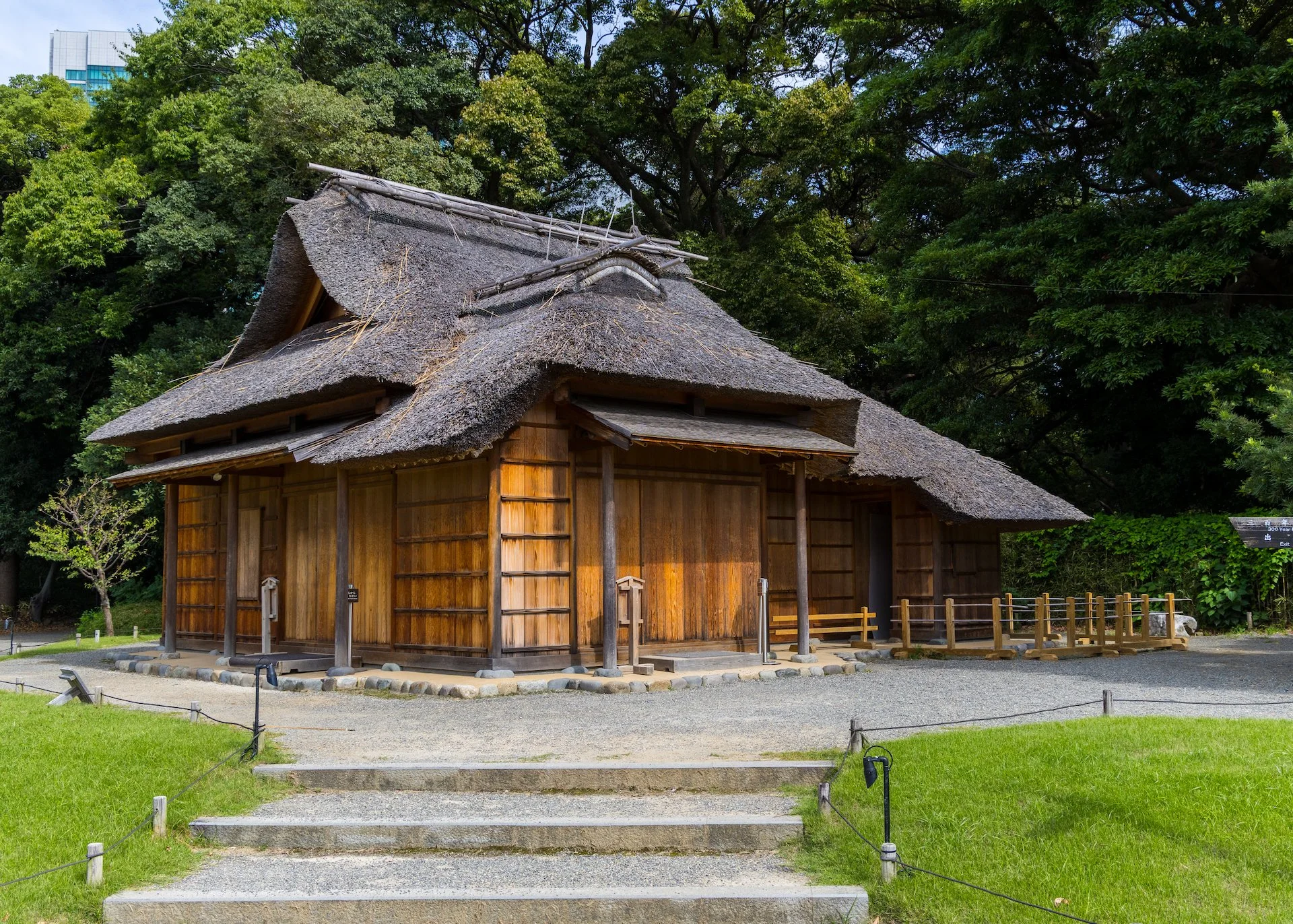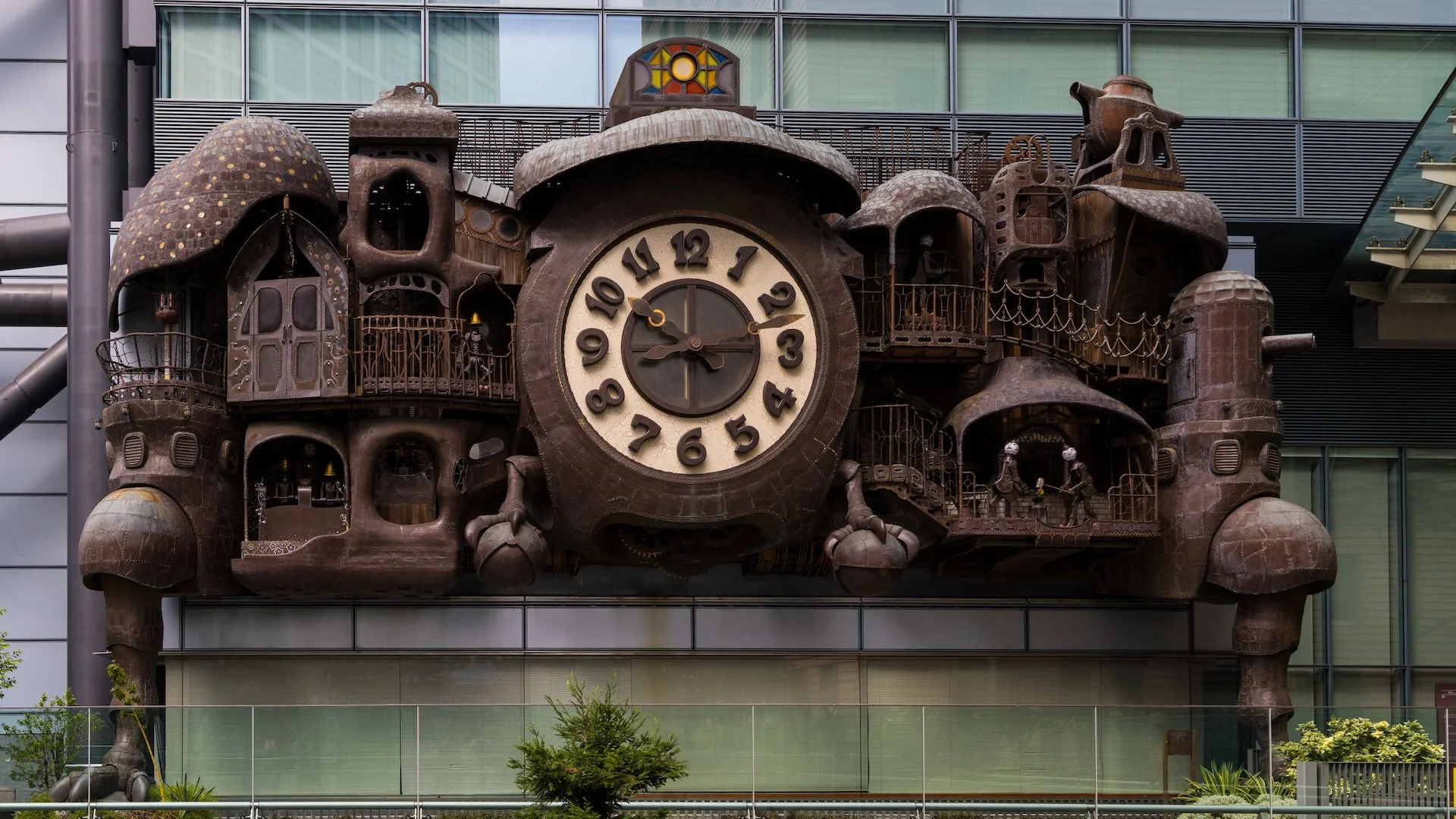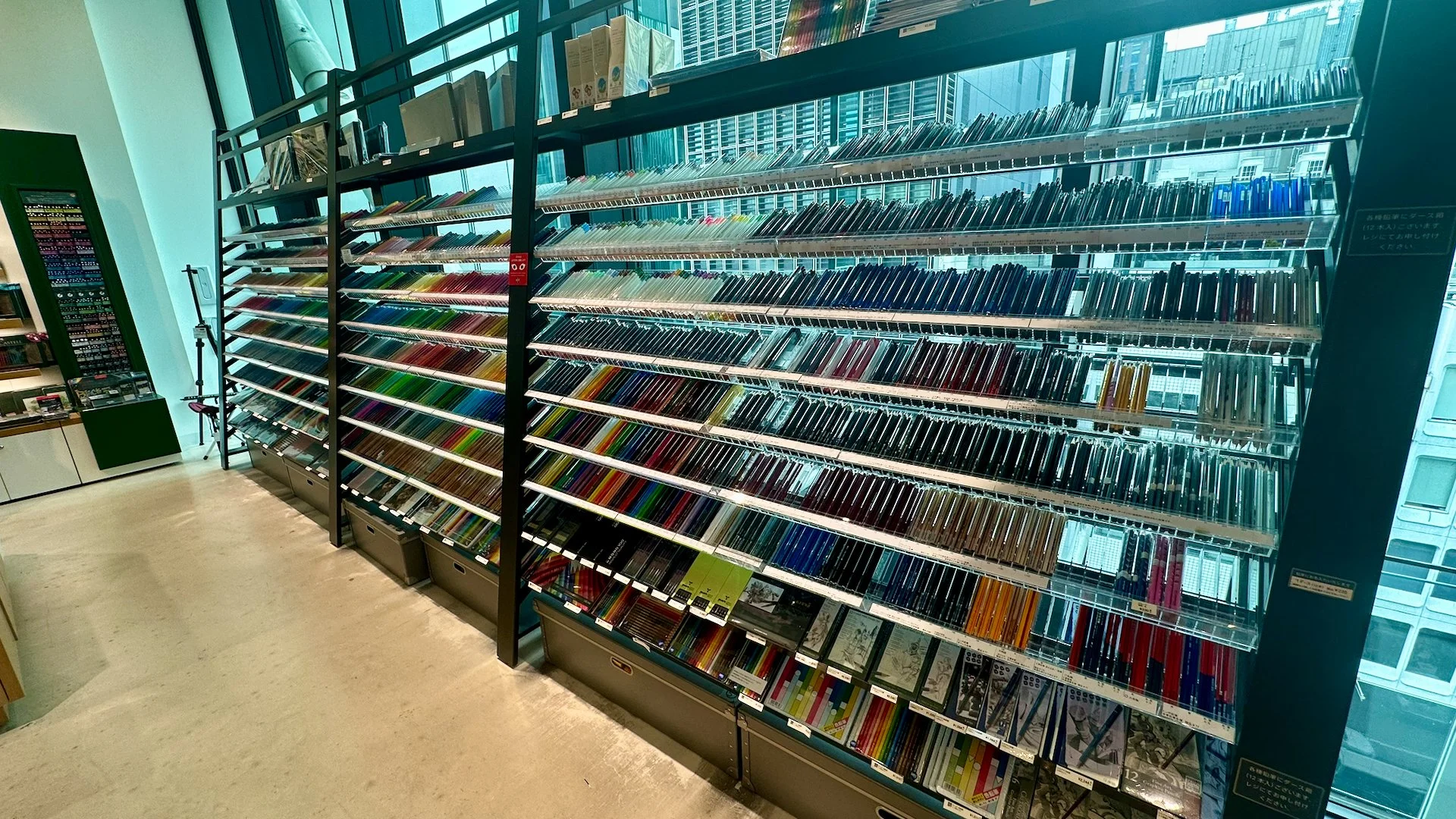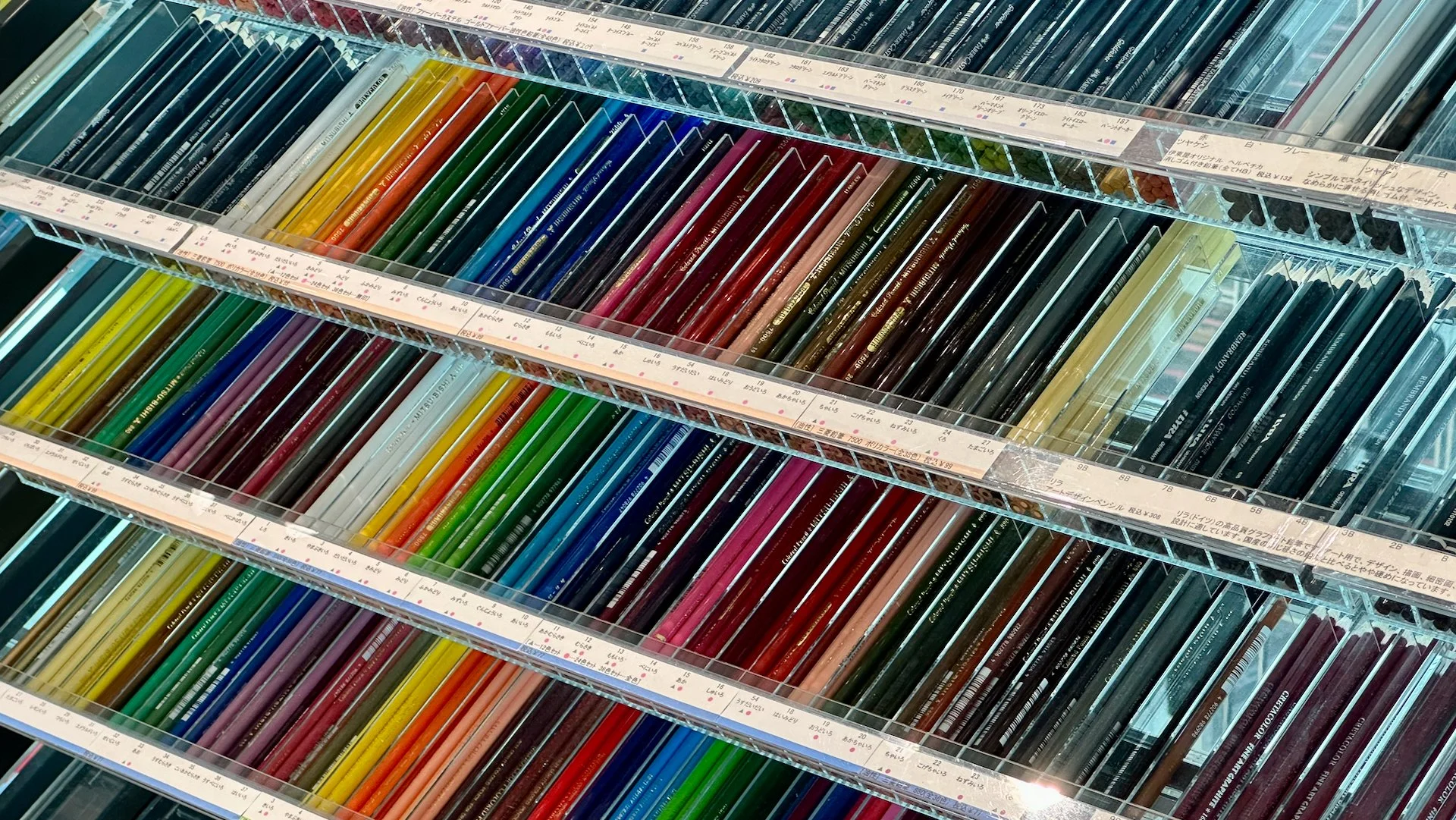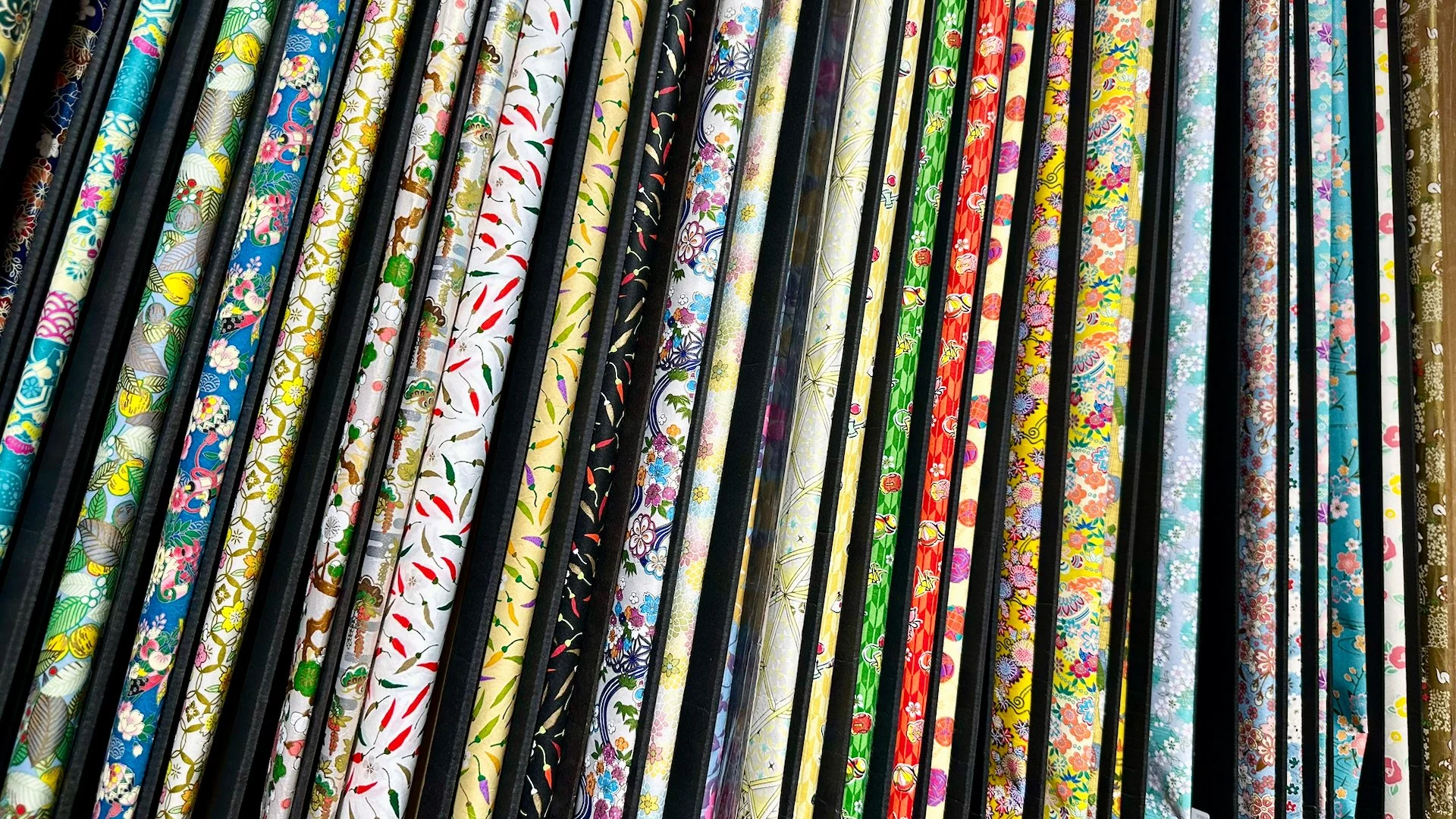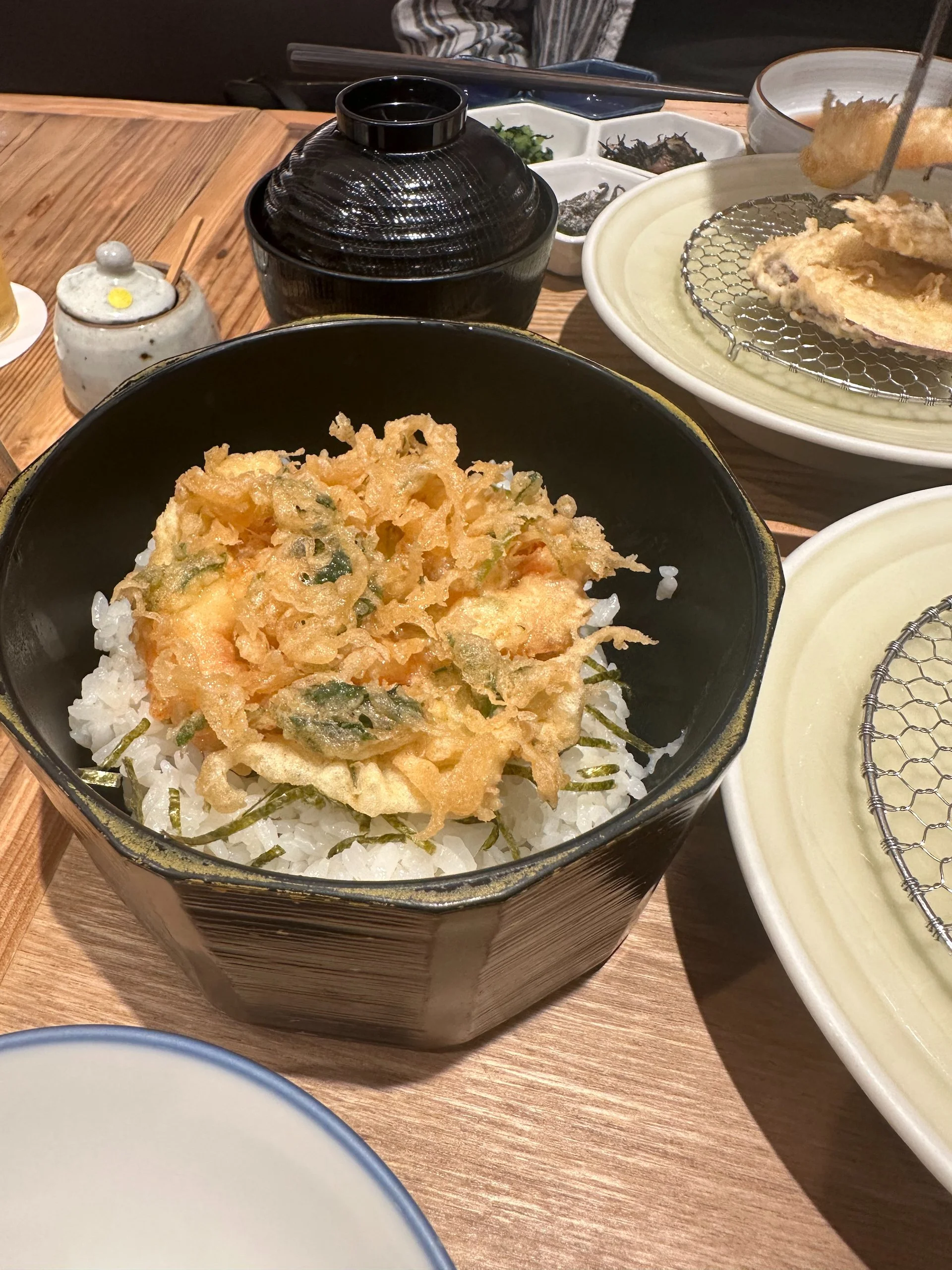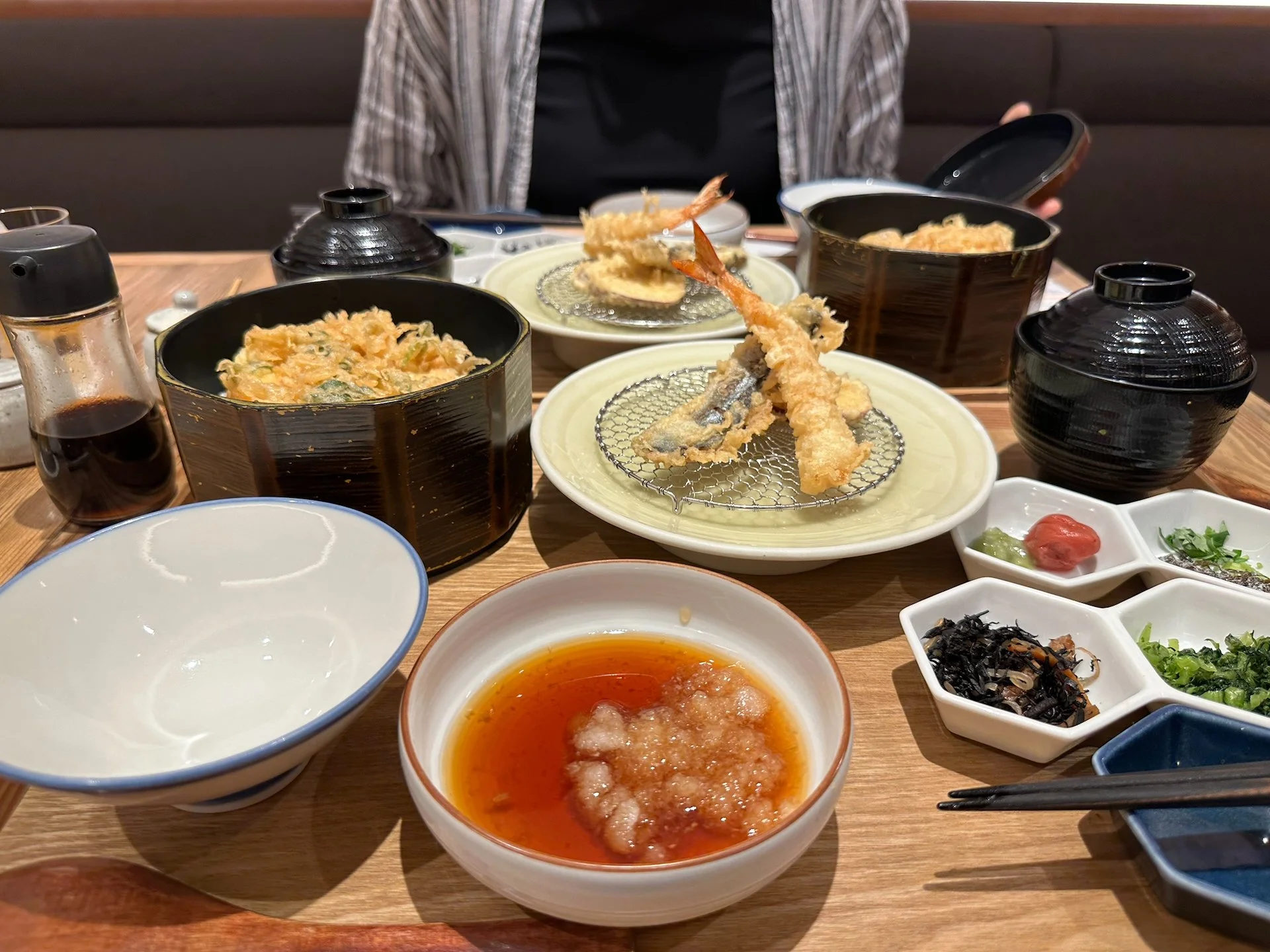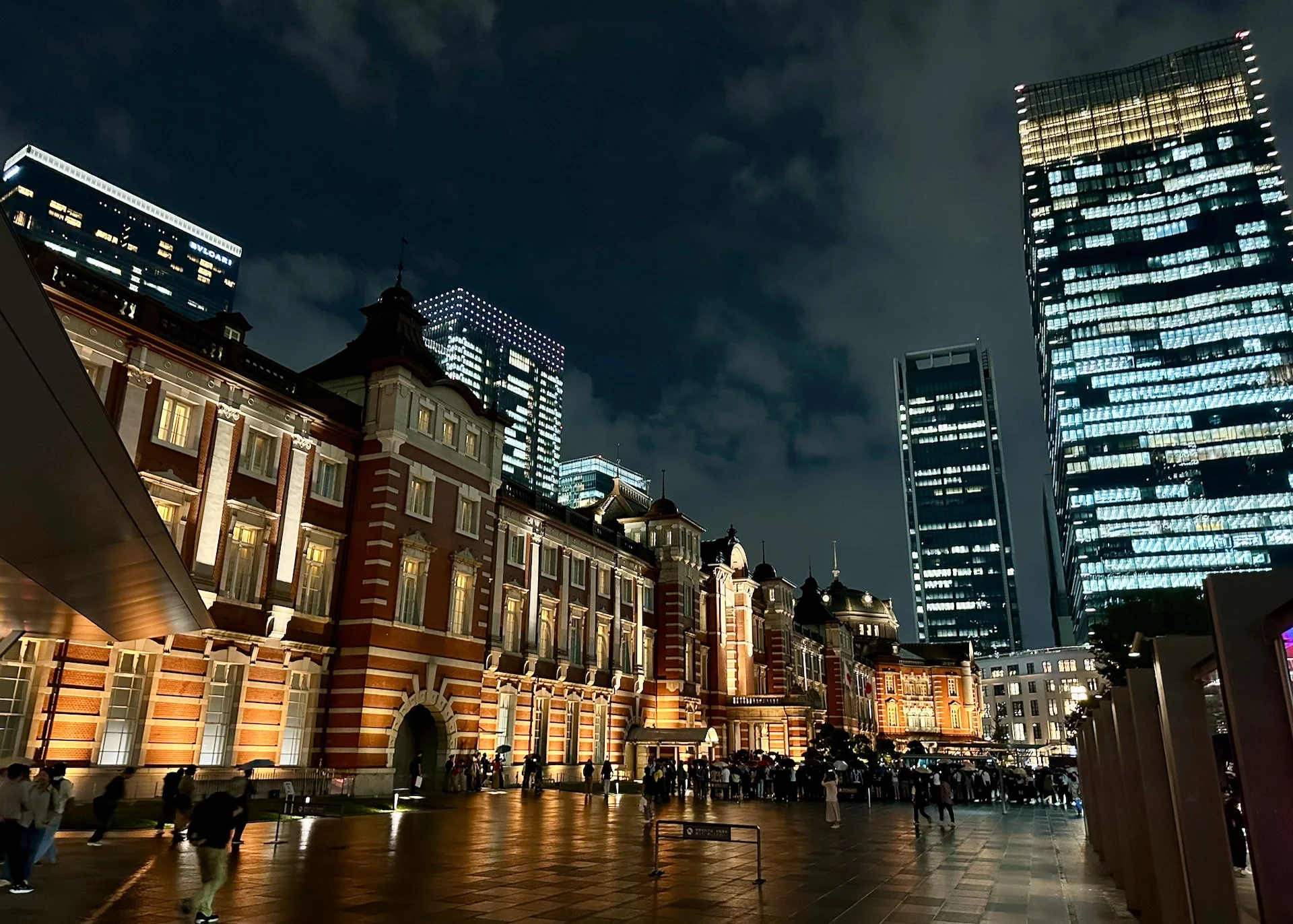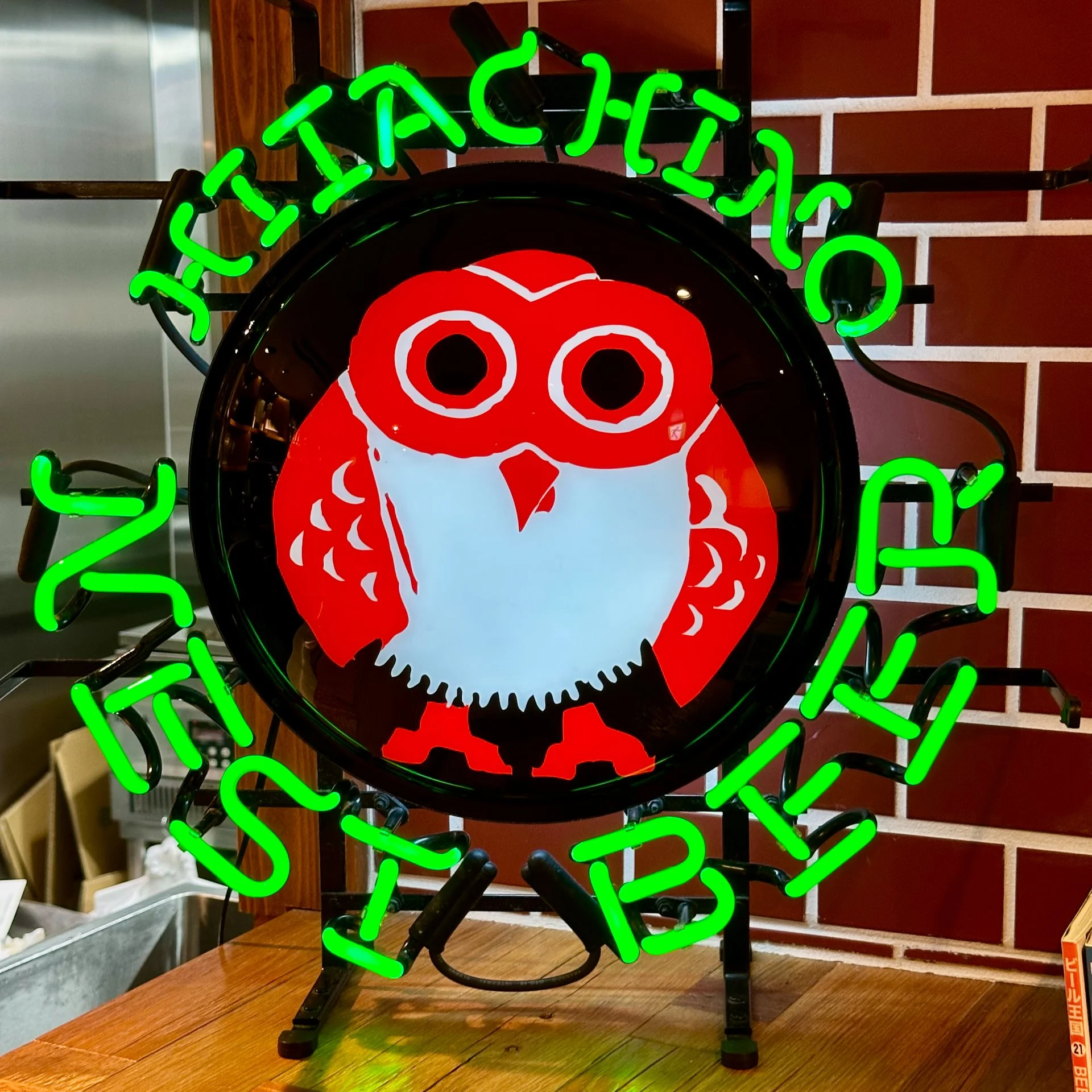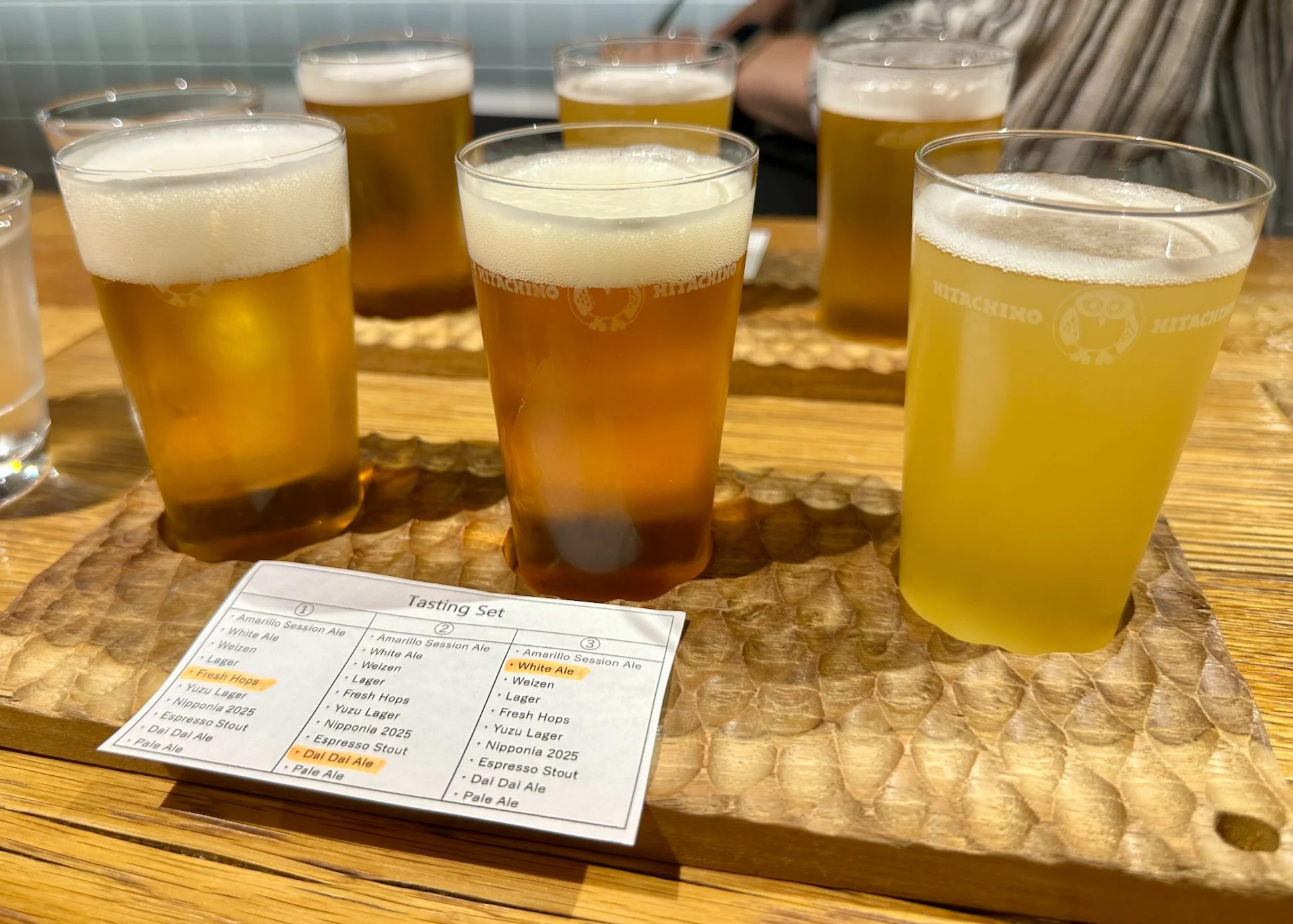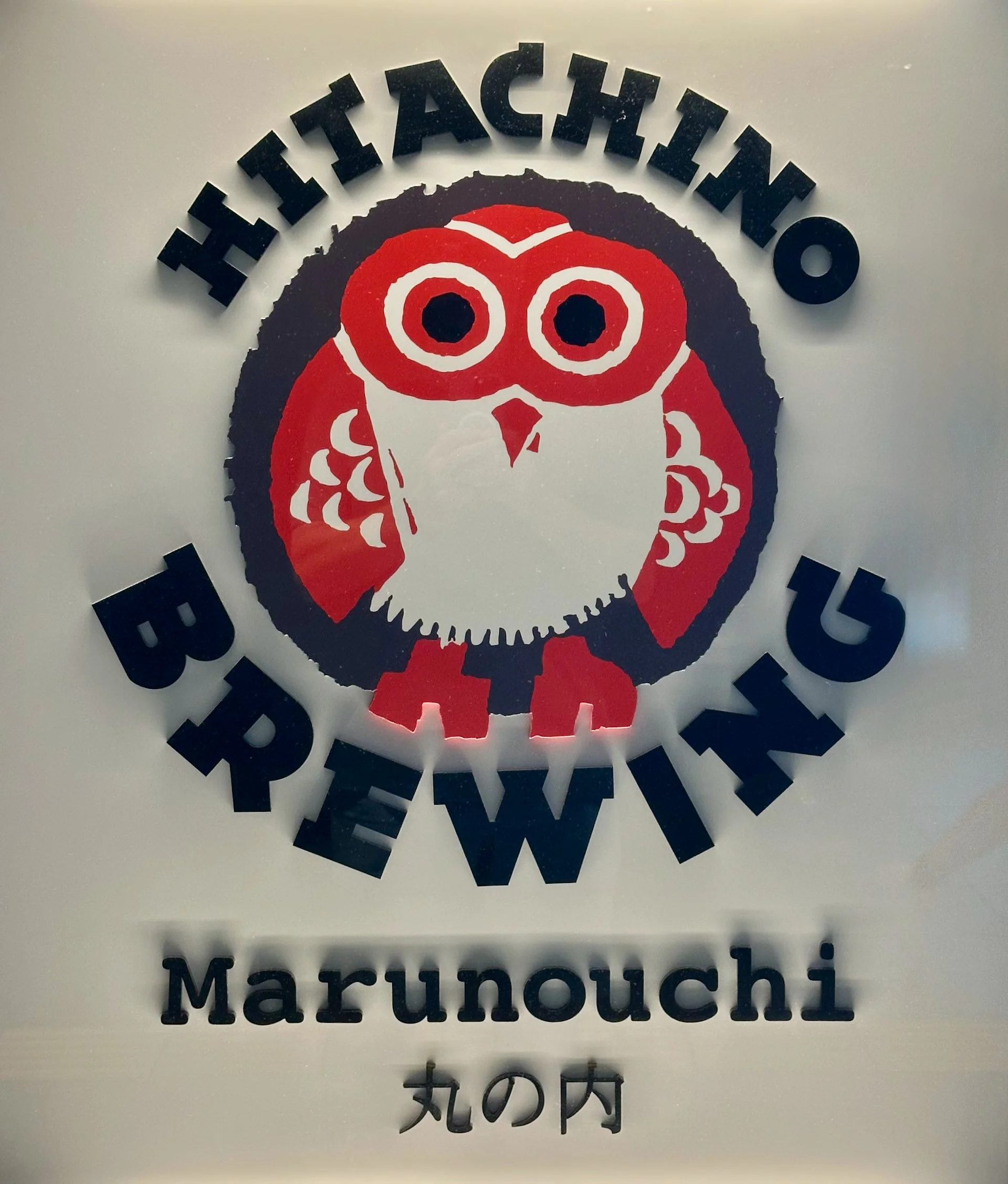Monday Sept 29th
Our first day was an early start, to say the least! One of the “must do” things on our list was a visit to the Toyosu Market, the massive fish market that is the center of the food world in Tokyo. Specifically, we wanted to see the tuna auction, where huge numbers of both fresh and frozen at sea tuna are auctioned off.
It was super-early - just after 5 a.m. when we arrived at the market.
Even before the auction was officially open, there was a lot of activity going on.
The Toyosu Fish Market is the world's largest wholesale fish and seafood market, located in the Koto Ward of Tokyo, Japan. It officially opened in October 2018, replacing the revered, older Tsukiji Market. The move was necessitated by the aging infrastructure and cramped conditions of the 83-year-old Tsukiji Market, which was also located on ground vulnerable to seismic activity and needed the land for a transportation hub for the 2020 Tokyo Olympics. Toyosu offers a modern, climate-controlled facility designed to ensure superior hygiene and food safety standards.
Historically, the market's lineage traces back to the Nihonbashi fish market, which was established in the early 17th century during the Edo period. This market later relocated and became the famous Tsukiji Market after the Great Kanto Earthquake of 1923.
The place is absolutely massive. Sightlines from different spots on the viewing platfrom gave you some sense of the scale.
Today, Toyosu is most famous for its early morning tuna auctions, which attract visitors from around the globe. While the wholesale activities happen in vast, enclosed halls, a dedicated visitor observation deck allows the public to view the auction action. The complex also houses numerous high-quality restaurants and retail shops, continuing the culinary tradition that made its predecessor a global icon. I had gone to the Tsukiji Market in 2018, the last time I was in Tokyo.
They have built a pretty great visitor centre for the market and the auction, and Justine was incredibly proactive in booking us special tickets that gave us access a separate viewing area on the second floor (as opposed to the public viewing on the third floor), closer to the auction. We had to be there for 5:30 a.m., with the doors opening at 5:00. After our long day and late night, the 4:15 wake up call came early! But we managed to get up ok and grabbed a taxi down to the market. Even Tokyo is quiet at 5 a.m. it seems.
We arrived just after 5 a.m. and easily found where we needed to be. A general comment about Tokyo - the signage and directions for things are really good. They include distances as well as direction, so you always know where you are at. And everything is available in English in the places where tourists are going to be.
We had our spot in line - time to go explore!
The auction required us to be there at 5:30, so we were early enough that we had the second place on the line for entrance into the viewing area. As always, the Japanese are well organized and after being given our spot in line (#2!), we were free to explore for half an hour. So off we went.
They have a little exhibition hall set up to explain the new market and how the auctions all work. They explain the different types of tuna, where they are caught and their sizes and other cool facts. They also had lots of photos showing the evolution of the market from its historic times, and through the 4 or 5 locations that it had been situated. It’s quite the interesting history.
For people that did not win the lottery, there is a viewing area with limited standing room where you can watch the auction floor from the third floor. It actually seemed pretty good.
With Justine being so on the ball and getting is a spot in the better viewing area, we were walked down to the second floor, where an open air platform, still glassed in but not closed in, gave us a much better experience. Not only could you see all the action but you could hear the mayhem and smell everything as well.
We were there on a pretty good day I think. Justine’s research showed that some days, there could only be 10-15 tuna on auction. We had a lot more than that! There were fresh fish as well as hundreds of frozen fish being auctioned. It was quite the site to see. Lots of “small” fish, but a few huge ones as well. It was so interesting to watch all the different people that are involved in this crazy process. They gave us about an hour to watch and during that time I’d guess that 75% of the tuna got sold. So it was a pretty big day. After being brought back out to the main floor, we headed out to explore the rest of the public areas of the market.
It’s a bit hard to explain how big the place is. There are three huge building that trucks are constantly bringing fish and vegetables in and out of. The tuna auction hall is just one part of the whole market.
We then went up onto the roof top garden on the building across the street. It provided panoramic views across the river and this part of the city. And boy was it warming up. Even being the end of September it was already pushing 30 degrees at 7 a.m.
Coming down from the rooftop we went to explore the part of the market where the restaurants and vendors are open to the public. We had breakfast of very fresh sushi, at a place where most of the other patrons seemed to be regulars and people that worked at the market. So that was a good sign.
Our breakfast spot…
Tuna, about as fresh as you can get it.
The food was excellent, and then we headed over to wander through the various market shops. The shops were over the intermediate wholesale market, where most of the fish is sold to smaller wholesalers. The Intermediate Wholesale Market at Toyosu is where fish and produce bought at the main auctions are sold to smaller wholesalers, retailers, and restaurants. It's a massive, bustling area featuring a huge variety of high-quality seafood and vegetables, but it's generally closed to the public, making it the essential, logistical heart of the entire market operation.
You couldn’t really see a lot of it, but through the small windows the variety of different fish on offer was obvious. The market shops we were exploring had everything from cloths and rubber boots to fresh veggies and dried fish to packaging and knives. As I want to buy a nice cooking knife while we’re here, I was excited to check them out. The knives really are works of art.
Eventually it was time to head out and continue exploring. We took the bus from the new Toyosu Market to the site of the original Tsukiji Outer Market. When I was here over 10 years ago, this was where the tuna auction and market was located. Now it was flattened and being redeveloped into a whole new neighbourhood!
The site near the old fish market - still a happening place.
This area is a bustling community of food suppliers, kitchen equipment merchants, and restaurants all jammed into a series of narrow little streets. It’s mayhem, in a fun way. We explored for a while, checking out all the food options and exploring different vendors (more knives!). Justine grabbed a coffee and I grabbed a grapefruit and cassis soda that was delicious! We spent a bit more time exploring, then continued on our way.
It’s was still just before 9am, and we walked over to Hamarikyu Gardens. The Hamarikyu Gardens is a stunning, traditional Japanese landscape garden, offering a tranquil escape that beautifully contrasts with the adjacent modern skyscrapers. Historically, the land was a residence and duck hunting ground for the Tokugawa Shogunate during the Edo Period (1603-1867), before becoming an Imperial detached palace.
The garden's most distinctive feature is the Shioiri no Ike (Tidal Pond), the only one of its kind in a Tokyo-Edo period garden, which draws its water from Tokyo Bay and changes level with the ocean tides. An elegant wooden bridge leads to the Nakajima Teahouse on an island, overlooking the serene pond.
Other notable sights include meticulously pruned trees, such as the impressive 300-year-old black pine, and seasonal flower fields. Designated as a Special National Historic Site and a Special Place of Scenic Beauty, Hamarikyu Gardens provides a profound blend of rich history, unique landscape architecture, and modern city views.
The “300 year old” pine. It’s massive - so big they have to help hold it up.
We noted this approach of building supports for the big trees in many of the parks around the city. It’s super interesting to see how they do it, without damaging the trees.
The gardens were lovely. There was a whole field of cosmo flowers, this huge old cactus and so many amazing looking pine trees. As we discovered going to multiple parks over a few days, they spend a lot of time pruning even the biggest trees. And speaking of big trees, the “300 year old” black pine was just massive. They install posts to help hold up the limbs of the tree. Sadly they were building a new bridge near it, so much of it was cut off from access/sight.
A little map of the walk around the gardens.
The Ni-Tele Really Big Clock is a colossal, mechanical steampunk-style sculpture designed by Hayao Miyazaki of Studio Ghibli. Located at the Nittele Tower in Tokyo's Shiodome district, this highly detailed copper and steel artwork features 32 moving elements that perform a brief show several times daily, resembling a scene from Howl's Moving Castle. We came across it as we were heading back to the hotel.
After wandering the park for a while, we decided to head back to the hotel and have a quick nap. We were feeling the effects of the jet lag and the early morning start. We napped for about an hour, heading back out around 1:30. We headed down to the Ginza area, only a couple of stops on the subway. We were quickly becoming “experts” on the Tokyo Metro, as we used it a lot to get around.
Ginza is the upscale fashion district and wow does it take it to a whole other level. There was a Tiffany store that must have been 6 stories tall. And all the big luxury brands had a presence like that. Crazy. But we weren’t there for luxury shopping. Lisa had found us a craft store called Itoya that was 12 floors high, so we decided to start with that. Now to be fair, while it was 12 stories, only 9 of them had merchandise (there was a lounge and a restaurant and oddly a floor of hydroponics), and the floors were fairly small. But still, 9 floors of crafts and stationary. We spent quite a bit of time in there as you can imagine.
After that, we needed to find a late lunch. That ended up being more difficult than expected, and resulted in us wandering quite a distance. But that was interesting in and of itself and we got to explore some interesting neighbourhoods. We ended up at a conveyor belt sushi restaurant which was a fun experience. After that, we explored an Anker (electronics) store and I bought a portable battery pack for my phone.
Then it was time to head over to the Uniqlo flagship store so Justine could experience that mayhem. Another 9 floors, these ones much bigger, of clothing. We each made some purchases, and it was fully dark by the time we headed out.
Heading back to Tokyo Station
After our shopping excursion we headed back to the subway and headed back to the hotel to drop off our stuff. For dinner, we decided to explore “Restaurant Street “ a whole area (three levels) of restaurants right inside Tokyo Station. It was kind of crazy. One had a huge line of people waiting on it (and continued to have lines every time we walked by). They were serving some sort of hamburger, so it was hard to understand the reason for the constant lines.
We ended up randomly picking a restaurant, and it ended up being quite the interesting and tasty experience. It was a tempura based dish, but it came with this serving of rice mixed with cooked egg and other ingredients. There were three phases to the meal - first you ate some of the tempura and the rice dish separately. Then you combined them with different sauces. One was a dipping sauce, the other more like a broth that you poured over what was remaining. It was all really tasty and quite interesting.
As we were leaving, we noticed that we were close to the exit that takes you out to the facade of the original train station. The original Tokyo Station Marunouchi Building, opened in 1914, is a magnificent example of early modern Japanese architecture. Designed by Kingo Tatsuno, the facade is renowned for its long, three-story expanse of striking red brick and white granite stripes.
Flanking the building are two ornate, domed roofs above the North and South entrances, which were meticulously restored to their pre-war appearance after being damaged in World War II. The station stands as an important cultural property, embodying a sense of historic European grandeur amidst the contemporary Tokyo skyline.
It was a dark, rainy night. An atmospheric view of the Tokyo Station facade.
Sadly it was raining, so we didn’t really get to see it. On the way back into the station to walk back to the hotel we found a cool little microbrewery and stopped to have a drink. The beer was pretty good, and the brewery’s mascot was this cute little owl!
After that, it was time to head back to the hotel and get some sleep! It had been a long but amazing first day exploring Tokyo!
As it seems that we’ll be doing a lot of walking on this trip, I thought I’d add a Daily Step Count: 26,053! A big first day.
